Ronald.phillips
Shared posts
Intel Warns That Price Hikes Are Coming This Year - CNET
The MCU's Multiverse Vs. Dimensions: Ms. Marvel Finally Clears Up The Confusion
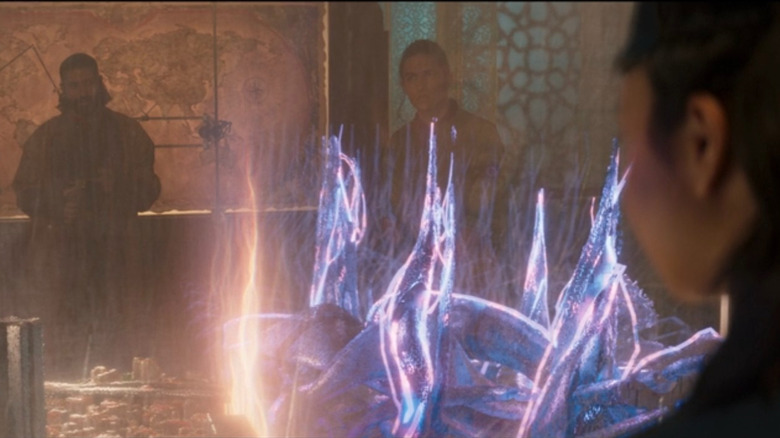
Words hold great meaning. That's why they can also cause great confusion when they're not chosen carefully. For example parallel/alternate dimensions, universes, and timelines are all used relatively synonymously in common conversation. They're all terms for hypothetical, self-contained planes of existence that coexist with our own. But in fiction, each of these terms means something distinct.
These distinctions are especially important in the Marvel Cinematic Universe, although, it has gotten increasingly difficult to differentiate between them as the MCU has grown. Nearly every movie and television show from the House of Ideas has its own rules on the subject, but at the end of the day, these seem to be the facts: "The multiverse" is a catch-all term for all the universes and dimensions in the MCU; Dimensions exist within universes, on the same plane of existence; There are different universes that run parallel to each other, which also contain their own dimensions. These alternate universes share many similarities to the "prime" universe (or as they call it in "Loki," the Sacred Timeline).
With the multiverse talk ramping up in Phase Four, the architects of the MCU have tried their best to set the record straight to avoid major confusion. And so far, the best place to find an explanation is "Ms. Marvel."
Embiggen Your Perception Of The Universe
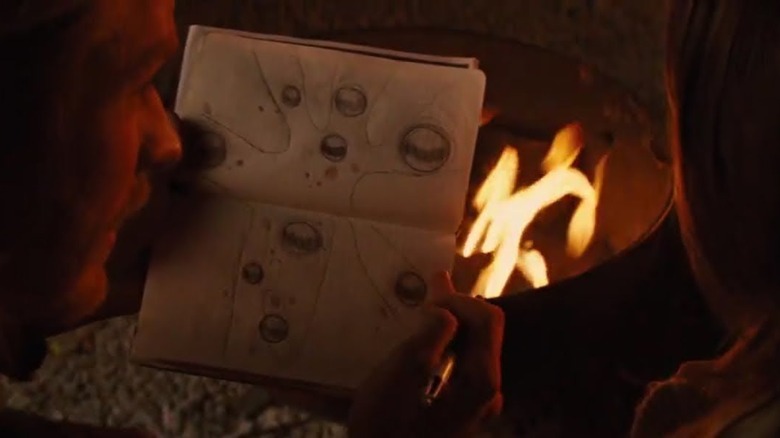
In the fourth episode of "Ms. Marvel," Kamala Khan gets a lesson on the mechanics of dimensions from the Red Daggers. They explain to her that the ClanDestines come from the Noor Dimension, which coexists with our world but cannot be seen by the naked eye. Bollywood star Farhan Aktar's character Waleed goes on to explain that there are many dimensions around us that we cannot see. Using his handy map, he shows Kamala that these dimensions are the opposite sides of the same coin, which is really the best explanation of the various dimensions that are tethered to the MCU. Among them are the Quantum Realm in the "Ant-Man" movies, the Dark Dimension in "Doctor Strange," and the Mirror Dimension in "Spider-Man: No Way Home," just to name a few. These places can be accessed by "flipping" our world over to reveal one of its many sides.
But what about realms? Within the MCU, "realm" is synonymous with "dimension," and the two can be used interchangeably. A good example of this is when Thor explains the World Tree to Dr. Jane Foster in "Thor." He draws the branches of the tree in her notes, including Asgard, Earth (or Midgard), and the rest of the Nine Realms recognized by his people's mythology.
In "Thor: Love and Thunder," Thor and Jane go on to visit even more realms, such as Omnipotence City, the Shadow Realm, and Valhalla. These are all places that they can travel to within their universe, just as the ClanDestines were able to travel through the Veil of Noor and into the land of Kamala's ancestors. It's almost like each dimension is a different planet, but to get there, you don't travel through space in the conventional sense.
Catching The Right Plane (Of Existence)
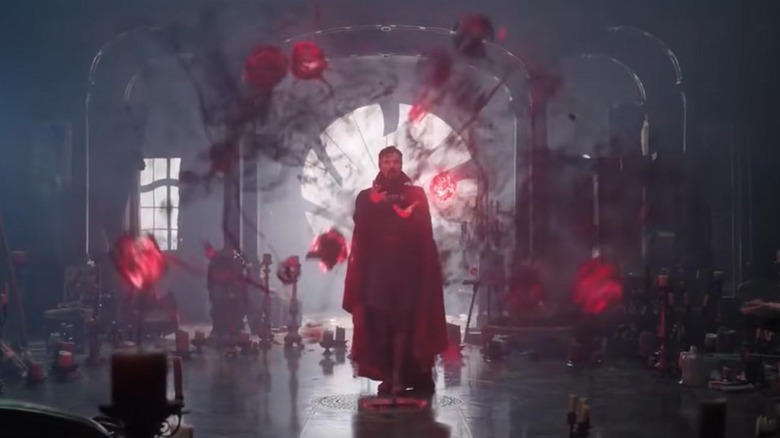
As for alternate universes, these exist with their own mystical dimensions attached to them as well. These are the different places that Doctor Strange, the Scarlet Witch, and America Chavez visit in "Doctor Strange in the Multiverse of Madness," that Loki, Sylvie, and the TVA end up in throughout "Loki," and that the Watcher protects in "What If?" These alternate universes are just like the prime universe with various changes. Loki as an alligator, Agent Peggy Carter becoming a Super Soldier instead of Steve Rogers, and pizza coming in ball form instead of slices are just a few of the different scenarios that play out in these parallel universes.
But to make things complicated again, we've seen people use the dimensions of the Sacred Timeline to travel to alternate universes. Typically, it's someone with great power like Wanda Maximoff after studying the Darkhold or former Sorcerer Supreme Dr. Stephen Strange. Wanda uses the Astral Plane (which is a dimension of Earth-616 AKA the Sacred Timeline AKA the main MCU) to dreamwalk into her Earth-838 counterpart's body and take over. Strange does the same thing with Earth-838's Astral Plane to project himself into the deceased Strange variant buried on Earth-616. And in the post-credits scene of Sam Raimi's film, it's implied that Charlize Theron's Clea uses the Dark Dimension to travel the multiverse and uncover incursions.
Honestly, if you think about all of this stuff too much you're bound to get a headache. But dimensions, universes, and timelines don't seem to be going anywhere any time soon when it comes to the MCU. Thankfully, "Ms. Marvel" (and hopefully whatever nonsense I said here) was able to make things a little more digestible. At least, for now.
Read this next: 11 Marvel Comics Villains We Really Want To See In The MCU
The post The MCU's Multiverse vs. Dimensions: Ms. Marvel Finally Clears Up the Confusion appeared first on /Film.
Ex-CIA engineer: sure all that stolen classified data passed through me but it totally could have been any of my teammates. Jury: Sure, Jan [Obvious]
RADV Driver Developer Talks AMD’s NGG “Next-Gen Geometry” Engine, To Be Always Enabled on RDNA 3 GPUs

Timur Kristóf, Mesa's Radeon Vulkan RADV open-source driver contributor, recently shared his venture working on the Next-Gen Geometry (NGG) support for current and next-gen AMD RDNA graphics cards with the current driver. Kristóf is known for his work as a contractor for Valve, assisting with the Linux graphics stack for the developer.
Timur Kristóf discusses working with the RADV Driver for the implementation of the AMD NGG "Next-Gen Geometry" Engine within RDNA GPUs
NGG is utilized for processing vertex and geometry calculations within RDNA and RDNA 2-based graphics cards. Recently, with the reveal of AMD RDNA 3 architecture and its requirements and specifications with graphics, it has been reported that NGG will always stay enabled. Previously, NGG was focused initially on working on the GFX9 and Vega architectures but was found to be quite problematic in use and did not help with increasing performance. Now, we are finding that it is more optimized and better used with RDNA architecture and its successors.

The most significant issue with integrating NGG into the RDNA architecture is the complex nature of the driver. In turn, this struggle has caused NGG to be extremely difficult to execute for RadeonSI OpenGL and RADV Vulkan accelerators. Website Phoronix reports this is due to outside developers not working directly with AMD. The fixes have been harder to implement.
On his blog, Kristóf discussed the difficulties with implementing the NGG driver, including his lack of seeing any performance advantages.
We did some benchmarks when we switched RADV and ACO to use the new pipeline. We found no significant perf changes. At all. Considering all the hype we heard about NGG at the hardware launch, I was quite surprised. However, after I set the hype aside, it was quite self-explanatory. When we switched to NGG, we still compiled our shaders the same way as before, so even though we used the new geometry pipeline, we didn’t do anything to take advantage of its new capabilities. The actual perf improvement came after I also implemented shader-based culling.
The results from benchmarks and published samples have shown a contrasting amount of results from the NGG. Currently, NGG, along with adding shader culling, has been more accessible and produced a better improvement in performance on the RDNA 2 architecture. Developers from Valve have not seen performance increases when using NGG shader culling and, in turn, have disabled the next-gen geometry.
The main takeaway from this post is that NGG is not a performance silver bullet that magically makes all your games faster. Instead, it is an enabler of new features. It lets the driver implement new techniques such as shader culling and new programming models like mesh shaders.
Kristóf has gone into much more detail on his blog about the subject for readers interested in the topic.
The post RADV Driver Developer Talks AMD’s NGG “Next-Gen Geometry” Engine, To Be Always Enabled on RDNA 3 GPUs by Jason R. Wilson appeared first on Wccftech.
Thermaltake Launches ATX 3.0 & PCIe Gen 5.0-Ready Toughpower GF3, iRGB, & SFX Series PSU Lineup, Ready For NVIDIA’s RTX 40 GPUs

Thermaltake has revealed its new PSU lineup, including the next-gen GF3, iRGB, and SFX series which conform to the ATX 3.0 & PCIe Gen 5.0 standards. The GF3 and SFX series PSU features PCIe Gen 5.0 support, including a 12+4 pin interface and initial support for the upcoming NVIDIA GeForce RTX 4000 series GPUs, and are offered in different wattages options.
Thermaltake announces new Toughpower GF3, iRGB, and SFX Series PSU Lineup for next-gen NVIDIA RTX 40 GPU support with ATX 3.0 & PCIe Gen 5.0 Standards
Focused on giving the best execution, the Toughpower GF3 series accompanies one-hundred percent premium Japanese capacitors and gives dependable power, guaranteeing smooth and stable activity and consistent and clean power through voltage security. The completely modular Toughpower GF3 series comes in 1650 W, 1350 W, 1200 W, 1000 W, 850 W, and 750 W and is designed to produce 80 PLUS Gold power efficiency levels.
The series is completely prepared and planned with a native 12+4 pin PCIe Gen 5 connector and is viable with Intel's ATX 3.0 specs, uncovering the cutting-edge PCIe's new technology. The GF3 1650 W locally upholds two PCIe 14+2 pins, making it conceivable to at the same time convey capacity to two top-of-the-line GPUs.
For the Toughpower iRGB PLUS Titanium 1250 W and 1650 W models, because the Riing Duo RGB Fan is introduced in the PSU, it makes it simple to accomplish your optimal aesthetic design without a problem. Toughpower iRGB PLUS Titanium Series accompanies a similar modular design known by the company with Low-Profile Flat connector cables, one-hundred percent premium 105°C Japanese capacitors, 80 PLUS Titanium Certified, and, to wrap things up,
Smart Power Management Platform Support, empowers you to get to data like Efficiency and Wattage User Behavior, Energy Consumption Reports, ECO reports, Energy Saving, and other accessibility options. The series includes SPM Security Protection, offering two critical capabilities: Power failure Alert and Power Off Remote Control.
To begin with, by Power failure Alert, clients can recognize if your PSU has fan failing actions happening, over-temperature, or unusual voltage through your smartphone. Through Power Off Remote Control, you plan when to switch off your PC without yourself truly being there to make it happen. This component is convenient when you need to leave during heavy downloads, allowing for the best energy saving.
With the SFX series, the models are tailor-made to give steady and nonstop power that can undoubtedly squeeze into a small form factor and accompanies levels of 750 W, 850 W, and 1000 W. The new SFX series is created with the modular 12+4 pin interface. The lineup is accessible with Intel's most recent SFX 12 V 3.42 and ATX 12 V 3.0 standards. The main thing to remember is that it is SFX-L size for 1000 W of the SFX series, 125 x 63.5 x 126mm. As far as its capacitors, they are 100 percent top-notch Japanese capacitors, conveying the most smooth insight without interference.
The post Thermaltake Launches ATX 3.0 & PCIe Gen 5.0-Ready Toughpower GF3, iRGB, & SFX Series PSU Lineup, Ready For NVIDIA’s RTX 40 GPUs by Jason R. Wilson appeared first on Wccftech.
Researchers Find New Spectre Vulnerabilities in Older AMD and Intel Chips
Another two security weaknesses associated with the Spectre Variant 2 vulnerability have been discovered within older AMD and Intel processing chips. It is not yet known whether these weaknesses will be exploited by attackers.
Origin Dropping BioWare Points
Ive had enough – Apple and legendary designer officially part ways
Sir Jony Ive and Apple have parted ways…again. This time it looks to be more official, as Apple and Ive’s design firm, LoveFrom, have decided not to renew their contract. If all this sounds confusing and silly, here’s some background.
Ive used to be Steve Jobs’s buddy back in the late 90s and served as chief design officer for most of Apple’s product line. Ive then left Apple in 2019, but only a little bit. At the time of his departure, the rumor mill suggested that Ive was frustrated with Apple and Tim Cook saying that Apple was becoming more of an operations company than a design company.
Ive formed his own design company, the aforementioned LoveFrom, and signed a contract for Apple to be LoveFrom’s chief client. LoveFrom (read: Ive) was free to work with other clients as long as Apple didn’t deem them to be in competition with Apple, neatly answering the question of why no one else has put a charging port on the bottom of a mouse.
What have you done for me lately?
Since then, LoveFrom consulted with Apple on the design of the 24-inch iMac, and other Apple products including the mythical Apple Car project. Now, both companies have decided to part ways. On Apple’s part, evidence suggests that the company may have been losing designers to Ive’s company, and it may have questioned the size of the contract signed (rumored to be in the $100 million range.) Meanwhile on LoveFrom’s side, Ive may have been chomping at the bit to expand his client list without having to check in with Cook first.
Ive and Jobs were seemingly cut from the same cloth and there was some concern when Ive left that Apple might be shedding its design aesthetic. There was some hope that LoveFrom might keep the ship on course. We’ll have to see where Apple takes its design language in the future, but there’s a fairly high amount of confidence that Apple will be just fine. Meanwhile, we will certainly bid a fond farewell to Mr. Jony “Al-you-mini-yum” Ive.
Source: MacRumors.com
The post Ive had enough – Apple and legendary designer officially part ways appeared first on XDA.
US to get better COVID booster that Americans won't take [Obvious]
Nvidia GeForce RTX 3090 Ti price may permanently fall by 20%

The GeForce RTX 3090 Ti is Nvidia's best graphics card and its class-leading performance carries an understandably high price, but it appears that the company may have quietly lowered the price of its flagship in recent days. While it's the only GPU to have its MSRP reduced for now, rumours are circulating that we may see similar reductions on other RTX 3000 cards in the near future.
RELATED LINKS: RTX 4000 - everything we know, GeForce Now RTX 3080 review, Best graphics cardWhy John Carpenter Doesn't Watch His Own Movies
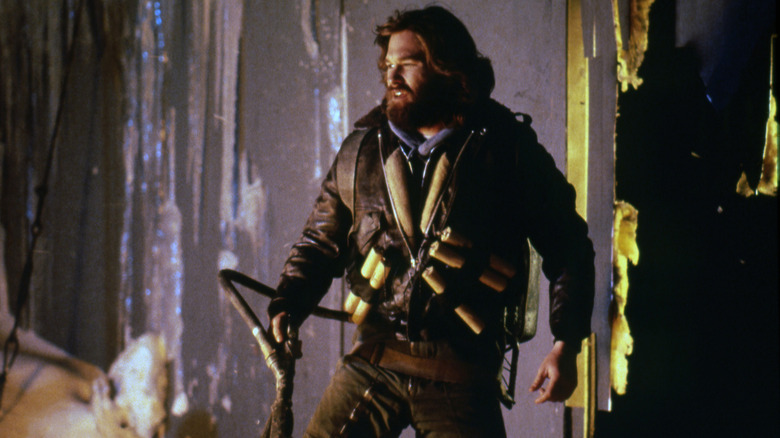
When John Carpenter was eight years old, he saw Fred M. Wilcox's sci-fi classic "Forbidden Planet" and said to himself, "I'm going to become a movie director. I have to do this." He did it. Boy, did he ever do it.
Over the last 48 years, John Carpenter has made at least six stone-cold masterpieces: "Assault on Precinct 13," "Halloween," "The Thing," "Starman," "Big Trouble in Little China" and "They Live." Very credible m-word cases can be made for "The Fog," "Escape from New York," "Christine," "Prince of Darkness" and "In the Mouth of Madness." These films are lean, mean thrill machines. You've probably watched them multiple times, possibly in the last week.
Ask Carpenter to revisit any of these films, however, and you will get a very firm rejection. As he told Vanity Fair in 2015, "[The movies] start and I think, 'Why did I do that? What was I thinking?'" Not even "Halloween," the film that turned him into a hot Hollywood property, and popularized an entire subgenre of horror (i.e. the slasher film)? Not a freaking chance. "Once they are done, they are out the door and I don't want to think about them anymore."
A Master Of Horror In Retrospect

Carpenter has nothing to complain about. He's an internationally renowned auteur (his earliest critical acclaim came from European critics), and one of the very few directors whose movies customarily bear possessory titles on their posters. The man has his own font (Franklin Gothic). He is our greatest living "Master of Horror" (and was 1A at minimum when George A. Romero was still kicking). As a filmmaker, what more could you ask?
A little contemporary respect from the folks charged with identifying and celebrating superior film craftsmanship would've been nice.
"Every movie I've made has had a little dark cloud around it," said Carpenter. He's not being overly sensitive. "Halloween" was a surprise blockbuster that many reviewers -- including Andrew Sarris, the dean of 20th century American film criticism -- deemed formally significant. But there was always a cudgel to accompany the acclaim. The New Yorker's Pauline Kael backhanded the film over its "dumb scariness," while the Los Angeles Times declared it "well-made but empty." Four years later, when Carpenter knocked out one of the greatest horror movies ever made in "The Thing," The New York Times' Vincent Canby carped that "[I]t aspired to be the quintessential moron movie of the 1980s," while Cinefantastique, a fan publication that should've been firmly in Carpenter's corner, ran a story asking, "Is This the Most Hated Movie of All Time?"
Don't Look Back
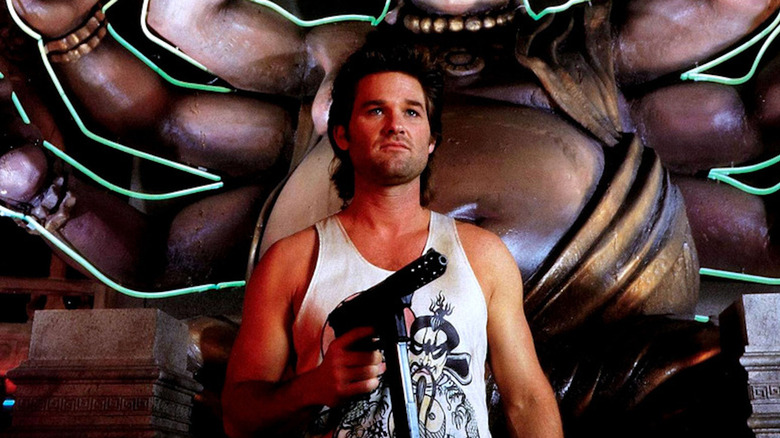
Carpenter's got a right to be leery of critics, and, sad as it sounds, good reason to never look back. With reviews like these on your masterpieces, you can't build a career unless you're always looking forward. And it's not just about the praise or lack thereof. Meryl Streep, arguably the most lauded actor in the history of the medium, proceeds likewise. It's especially difficult for a filmmaker, who, during post-production, watches the movie over and over and over again. It's monotonous. At a certain point, it's no longer a movie. Whatever "magic" you've conjured at various junctures throughout the process has dissipated. It's work, and you're relieved to be done with it. It's absolutely something you want to kick out the door.
Look at it through the creator's lens, and it's a miracle any director wants to spend another two hours in the dark with one of their films, even with an adoring audience. Those that do have a tendency to rework their perfectly perfect movies to death (trust me, Michael Mann, you got it right the first time on every movie you've ever made, especially "The Last of the Mohicans"). So while Carpenter's maintaining his sanity as a (now retired) filmmaker, he's also doing us a favor. You can't recut what you don't rewatch.
Read this next: The 31 Scariest Movie Scenes Ever
The post Why John Carpenter Doesn't Watch His Own Movies appeared first on /Film.
Christian Bale Entertained Thor: Love & Thunder's Young Cast With Gorr's Black Goop
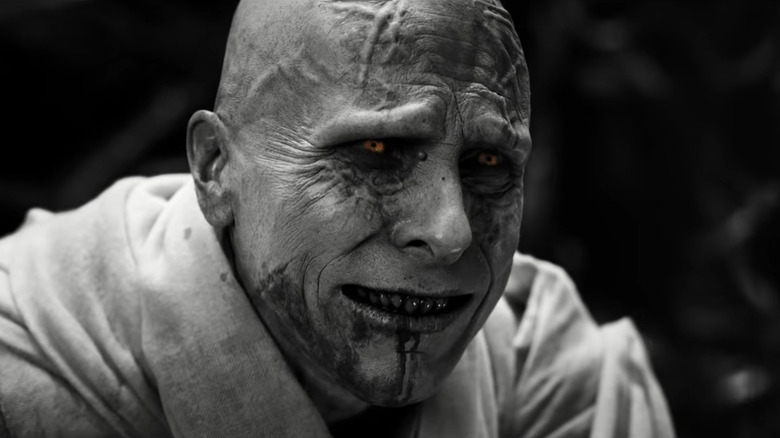
Spoilers for "Thor: Love and Thunder" ahead.
You know the old Hollywood saying: never work with dogs or children. However, Christian Bale, who plays the villain Gorr the God Butcher in "Thor: Love and Thunder" seems to have had a great time with the kids of New Asgard in the film, who loved him right back.
That's a little odd considering the character of Gorr is pretty terrifying. Stark white makeup all over his face, glowing yellow eyes, and a whole lot of black goo staining his teeth and leaking out of his mouth. He may have frightened the gods in the film, but according to an interview with Marvel.com, the kids found the entire thing hilarious. If that's true, I'd love to hear what they would have thought about the never-filmed dance to Kate Bush, that Bale mentioned had been in the works at one point.
Bale, who won the Oscar for Best Supporting Actor for "The Fighter," assumed that the kids probably didn't even know who he was. He said they thought, "he's just some old fart. I don't know that they've got any clue about anything I've ever done, I was just the weirdo with the strange makeup."
Dribbling Goo Is Good For Giggles

One of the things that led to the laughter at Gorr was the fact that Bale attempted to stay in character during his scenes. That didn't seem to impress the kids, but it pleased Bale that it worked out that way. He explained:
"I loved those scenes. We don't see it that much in the film, but I always had bile in my mouth, which I would still dribble in front of them. They were always asking me to do that, going 'Smile,' going, 'Dribble,' going 'ahhhhh!' They loved it, and everyone wanted to take turns with the sword. It was really wonderful, and the kids were great and bloody good little actors and all these fantastic outfits."
While we could maybe debate the wisdom of letting the kids play with sword props, I have to agree that they were great. The big fight scene where Thor imbues them with the power of Zeus' thunderbolt (for a limited time only, of course) is adorable. Not only is it fun to see these kids fight back against the man who has taken them, but having one of them armed with a stuffy that has lasers shooting out of its eyes is going to be recreated by kids all over the world for a long time.
New Asgard's Children Are Our Future
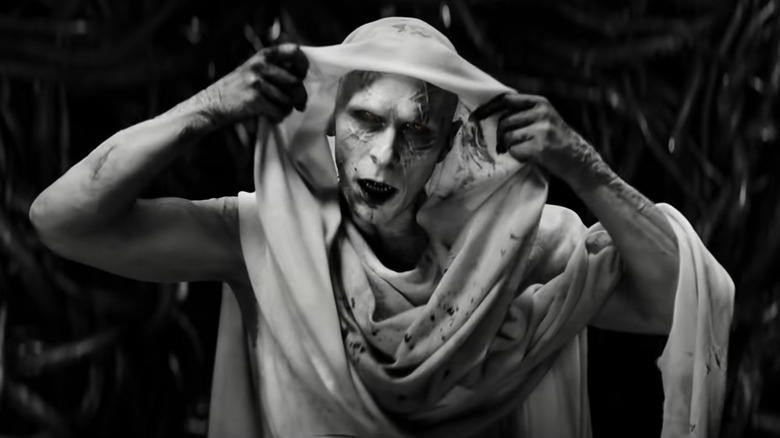
The young actors served another delightful purpose for Bale's co-star Tessa Thompson who plays Valkyrie. She ends the film by starting fight training with the kids, and told the site that it helped remind her that they're play-acting for a living. She said:
"Most of the time, when you're doing the fight scenes, you're fighting nobody, [because of the CGI]. You're just walking around, just fighting the air, which it just feels like you're a kid, essentially. To invite kids into this experience really reminds you of not just who these movies are made for, in some ways, but also how to make these movies, because kids naturally know how to play...These movies require a childlike nature in terms of performance. There's so much of the imagination. It's basically like playing as a kid. You're running around."
That sounds like a blast! Give me a prop sword, a tennis ball on a stick for an eyeline, and a green sheet for a background, and I'd probably turn into a kid as well.
"Thor: Love and Thunder" also stars Natalie Portman, and is in theaters now.
Read this next: Every Ridley Scott Movie Ranked From Worst To Best
The post Christian Bale Entertained Thor: Love & Thunder's Young Cast with Gorr's Black Goop appeared first on /Film.
The Geekbox: Episode 627
Wherein we discuss (with spoiler warnings for all of this) Westworld, Severance, Succession, The Boys, Stranger Things, and Thor: Love and Thunder. Starring Ryan Scott, Justin Haywald, and Ryan Higgins.
Casey White, inmate who escaped with prison guard lover, charged with murder in her death

Casey White, an inmate in an Alabama jail, was broken out by corrections officer Vicky White. The two, unrelated and reportedly lovers, then went on the run. They were soon found, and after a brief pursuit Vicky reportedly shot herself dead and Casey was taken back into custody. — Read the rest
Resident Evil: Season 1 – Netflix Review
The post Resident Evil: Season 1 – Netflix Review appeared first on Heaven of Horror.
The 95 Best Documentaries Ever
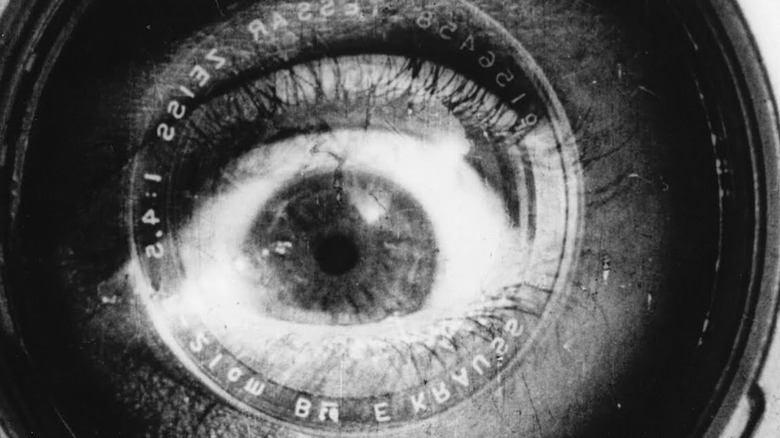
Documentary films are capable of so much. They can shape opinions, change minds, make you laugh or cry, and take you to a world you've never seen before. There's really no limit to what they can focus on, either -- some are intimate studies of a single person, while others attempt to make sense of a sprawling global conflict. The possibilities really are limitless. If it has existed at any point in time, or if it may exist at any point in the future, odds are that you can make a documentary about it.
So, what is it that makes a documentary exceptional? There's no one way to define a great documentary, but this list may provide some assistance. Docs are an incredibly popular form of filmmaking, and can often be produced inexpensively; theoretically, anyone who can pick up a camera can make one. That's not to say it's easy, though -- making a documentary that stands out is no small feat. If you're looking for your next film to watch, look no further, as these documentaries will challenge, inspire, anger, disgust, and radicalize you — sometimes, all at once.
13th
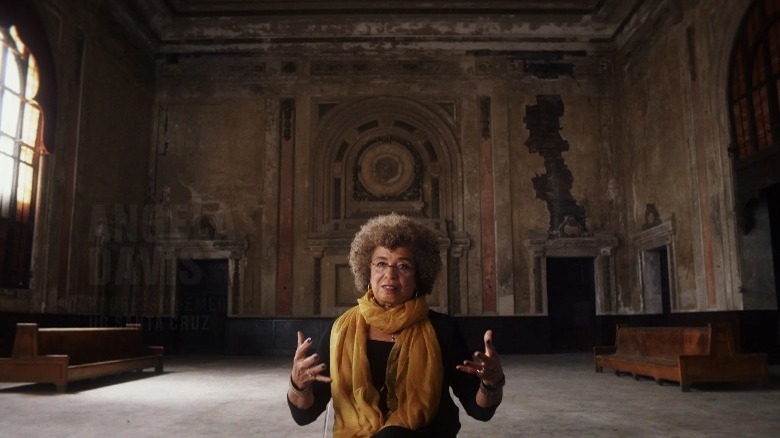
Ava DuVernay is largely known for her fiction features, having helmed the powerful biopic "Selma" and the adventurous "A Wrinkle in Time." However, DuVernay's first foray into documentary filmmaking is also hugely impactful, as she investigates the 13th Amendment to the American Constitution, which abolished slavery -- except as a punishment for a crime.
The film explores how the amendment actually paved the way for a new kind of slavery to emerge through the industrial prison complex, providing a vital education on a major issue plaguing America. It's the kind of film that should be shown in every history class across the nation.
Starring: Michelle Alexander, Bryan Stevenson, Van Jones
Director: Ava DuVernay
Year: 2016
Runtime: 100 minutes
Rating: NR
Rotten Tomatoes Score: 97%
The Act Of Killing

"The Act of Killing" is extraordinary, unforgettable filmmaking that brings audiences face to face with a killer. The film follows the massacres of communist people in Indonesia, as well as those who perpetrated the crimes. While you may assume that the murderers would be behind bars, they're instead revered for what they did. It's every bit as terrifying as it is fascinating. "The Act of Killing" is a highly compelling investigation into the power of the camera, and the confrontational ability that documentary filmmaking possesses. It's difficult viewing for sure, but "The Act of Killing" is like nothing you've seen before.
Starring: Anwar Congo, Jusuf Kalla
Director: Joshua Oppenheimer
Year: 2012
Runtime: 122 minutes
Rating: NR
Rotten Tomatoes Score: 95%
Ai Weiwei: Never Sorry
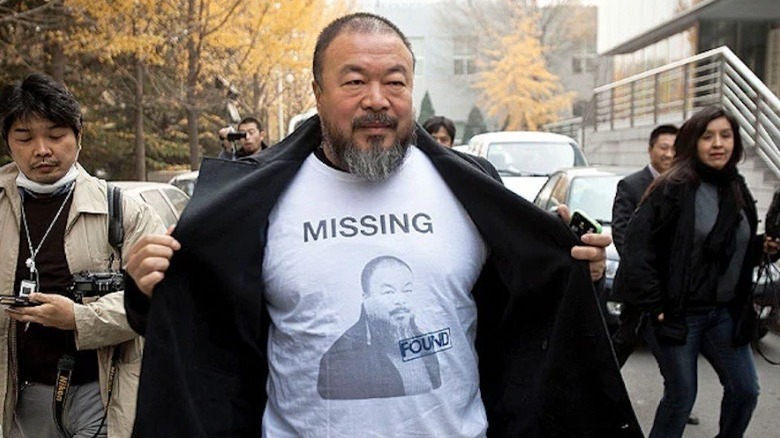
A winning portrait of a fascinating and controversial artist, Alison Klayman's "Ai Weiwei: Never Sorry" is a marvel. Ai Weiwei is best known for designing the Bird's Nest, the stadium used in the opening ceremonies for the Beijing 2008 Summer Olympics. The film offers a lot more than just some insight into Weiwei's art, though, painting a complex portrait of a man and his impact on those around him.
It's also the story of a man fighting against extremely aggressive censorship and the way that art can transgress boundaries. If you're looking for a movie about the power an artist can wield, look no further.
Starring: Weiwei Ai, Dan-qing Chen, Dan Ai
Director: Alison Klayman
Year: 2012
Runtime: 91 minutes
Rating: R
Rotten Tomatoes Score: 98%
American Movie

A charming, hilarious, and surprising documentary, "American Movie" follows Mark Borchardt, who aspires to become a filmmaker. He doesn't just dream, though. Alongside his best friend, Borchardt is fiercely determined to make the horror film that haunts his imagination a reality, despite the endless difficulties in his path. "American Movie" is a must-watch for those who love cinema, especially those fascinated by the surprisingly arduous journey it takes to get a movie made.
Starring: Mark Borchardt, Tom Schimmels, Monica Borchardt
Director: Chris Smith
Year: 1999
Runtime: 107 minutes
Rating: R
Rotten Tomatoes Score: 94%
Amy

Asif Kapadia's "Amy" takes a no-holds-barred look at the life of gifted musician Amy Winehouse. The film charts Winehouse's massive rise and devastating fall, using lots of home and archival footage to deliver a beautiful and sensitive portrait of a troubled prodigal talent. The film is intimate without ever feeling exploitative, unafraid to show the uglier side of Winehouse's life while taking the time to examine the things and people that Kapadia suggests contributed to her all too early demise.
Starring: Amy Winehouse, Tony Bennett, Pete Doherty
Director: Asif Kapadia
Year: 2015
Runtime: 128 minutes
Rating: R
Rotten Tomatoes Score: 95%
An Inconvenient Truth

A film that gets more prescient with each passing moment, Davis Guggenheim's "An Inconvenient Truth" is all about the ongoing climate crisis. It was difficult to view when it was first released in 2006, but now it feels practically unbearable. The film famously features former vice president Al Gore, who offers tremendous insights into global warming: how it started, what makes it worse, the dangers it poses, and how we can curb its overwhelming threat. Unfortunately, as the warnings of the film — and the vast majority of scientists — continue to go ignored, the film feels more like a warning sign we refused to listen to more than anything else.
Starring: Al Gore, Billy West
Director: Davis Guggenheim
Year: 2006
Runtime: 95 minutes
Rating: PG
Rotten Tomatoes Score: 93%
The Battle Of Chile

Documentaries possess the incredible ability to transport you to places you've never been, and they can provide meticulous explorations of certain moments in time. Patricio Guzmán's "The Battle of Chile" is a massive undertaking -- combined, its three parts are over five hours long -- but it's so compelling and full of information that its runtime flies by. The films provide an essential chronicle of Chile in the 1970s, examining a country under serious political duress, as well as the revolution and violent coup against president Salvador Allende. The film was banned in its native Chile for over 20 years, but can now be seen all over the world as the extremely valuable piece of history it is.
Starring: Abilio Fernández
Director: Patricio Guzmán
Year: 1975
Runtime: 320 minutes
Rating: NR
Rotten Tomatoes Score: N/A
The Battle Of The Somme

One of the earliest major cinematic events, "The Battle of the Somme" brought the frontlines of the First World War to audiences back home for the first time. It's difficult to explain just how extraordinarily impactful this film is. Nowadays, endless footage of war is just a few clicks away, but audiences flocked to cinemas to see "The Battle of the Somme" — over 20 million people viewed the film during its first six weeks in theaters.
Admittedly, the film isn't especially exciting to a modern audience -- there isn't much in terms of a narrative, as it's largely just footage of soldiers walking around and fighting on the front lines -- but its immense historical importance makes it an absolute must-watch.
Starring: Beauvoir De Lisle
Director: Geoffrey H. Malins
Year: 1916
Runtime: 74 minutes
Rating: N/A
Rotten Tomatoes Score: N/A
Belfast, Maine

If you've never seen a Frederick Wiseman film before, you'll probably be quite surprised by what's on-screen: There is no narration and no interviews, which are often central elements in documentary films. Instead, Wiseman fully immerses himself into whatever institution he's investigating -- in this case, the port city of Belfast, Maine. Wiseman's camera follows the lives of countless workers, including city counselors, doctors, teachers, social workers, tugboat operators, and more. At over four hours long, "Belfast, Maine" may seem like a daunting prospect, but the film captures the ordinary with an almost hypnotic effect, creating a rich tapestry of an entire city by simply observing.
Director: Frederick Wiseman
Year: 1999
Runtime: 248 minutes
Rating: NR
Rotten Tomatoes Score: N/A
Berlin, Symphony Of A Great City

An exquisite look at a city in motion, "Berlin, Symphony of a Great City" unfolds over five acts, which take place during a single day in Berlin, Germany. It's only an hour in length, but it feels quicker, and there are countless moments that will leave you in awe, wondering how on Earth the film could have been made so many decades before the advent of digital effects. The word "Symphony" in its title is important, too, as it hones in on the film's stunning editing, which echoes Soviet montage but takes a much more musical approach; that's all the more remarkable given that the film was released without synchronized sound.
Director: Walther Ruttmann
Year: 1927
Runtime: 60 minutes
Rating: NR
Rotten Tomatoes Score: 86%
Bowling For Columbine

Many documentary filmmakers prefer to stay behind the camera. Michael Moore is not one of them. A proud iconoclast, Moore boldly goes against the grain at every opportunity — when he accepted his Oscar for "Bowling for Columbine" he was met with a chorus of boos after criticizing George W. Bush and the second Iraq War. However, "Bowling for Columbine," however, is a thoughtful and emotional exploration of gun violence viewed through the lens of the Columbine shooting.
The film is so much more than a look at a particular issue. It's a heart-wrenching powerhouse of a production that explores America's often inexplicable relationship with firearms and the seemingly unstoppable powers that keep the weapons so accessible. It's incredible to see Moore attempt to hold the people in charge responsible, and while it's not an easy watch, it's a vital one.
Starring: Michael Moore, George W. Bush, Dick Clark
Director: Michael Moore
Year: 2002
Runtime: 120 minutes
Rating: R
Rotten Tomatoes Score: 95%
Buena Vista Social Club
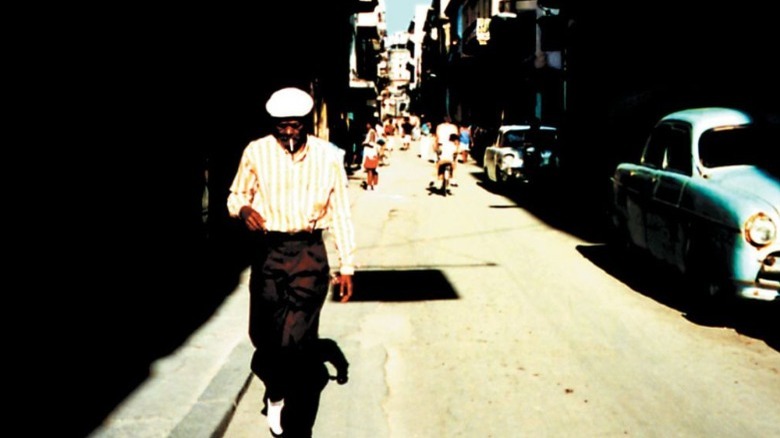
Nobody said that filmmaking was easy, though in its earliest days Hollywood was a pretty well-oiled machine, churning out films at a remarkable speed. However, as people envisioned more elaborate movies, things grew substantially more complicated. One of the wildest movies ever made has to be Werner Herzog's "Fitzcarraldo," for which Herzog was determined to film on location in the Amazon River, much as he did with "Aguirre: The Wrath of God." That one was tough going, but it pales in comparison to the difficulties involved with making "Fitzcarraldo."
The incredible journey that resulted lies at the heart of "Burden of Dreams." I won't spoil the details for you if you're unfamiliar, but the documentary is an addictive look at quite possibly the most arduous film shoot in history.
Starring: Werner Herzog, Claudia Cardinale, Mick Jagger
Director: Les Blank
Year: 1982
Runtime: 95 minutes
Rating: NR
Rotten Tomatoes Score: 89%
Burden Of Dreams
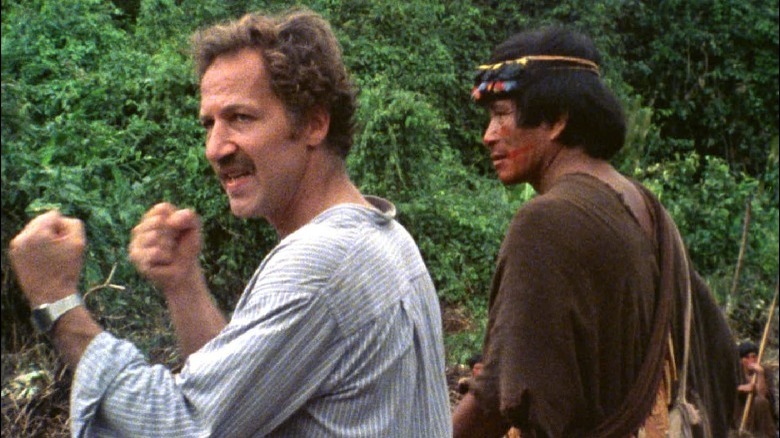
Nobody said that filmmaking was easy, though in its earliest days Hollywood was a pretty well-oiled machine. The studio system allowed for films to be churned out with remarkable speed and efficiency. However, as people envisioned more elaborate movies, things became more complicated; just look at Werner Herzog's "Fitzcarraldo," which has to be one of the most involved movies ever produced. For one, as he did on "Aguirre: The Wrath of God," Herzog was determined to film on location in the Amazon River. While making "Aguiree" was tough going, though, it was nothing compared to the challenge of making "Fitzcarraldo." That film's incredible journey lies at the heart of "Burden of Dreams." I won't spoil the details for you, but rest assured that the documentary is an addictive look at what was quite possibly the most arduous film shoot in history.
Starring: Werner Herzog, Claudia Cardinale, Mick Jagger
Director: Les Blank
Year: 1982
Runtime: 95 minutes
Rating: NR
Rotten Tomatoes Score: 94%
Capturing The Friedmans

"Just when you think everything is going to be dull, something is dropped on your lap and it turns out to be something bigger than you ever thought," says Detective Frances Galasso in "Capturing the Friedmans," which perfectly sums up Andrew Jarecki's documentary. What first appears to be a portrait of an everyday family quickly becomes a series of explosive revelations. Jarecki's film jumps between family members, detectives, and victims to paint an engrossing portrait of some truly horrific acts, reminding audiences that the truth isn't always easy to come by.
Starring: David Friedman, Jesse Friedman, Elaine Friedman
Director: Andrew Jarecki
Year: 2003
Runtime: 107 minutes
Rating: NR
Rotten Tomatoes Score: 97%
Chronicle Of A Summer
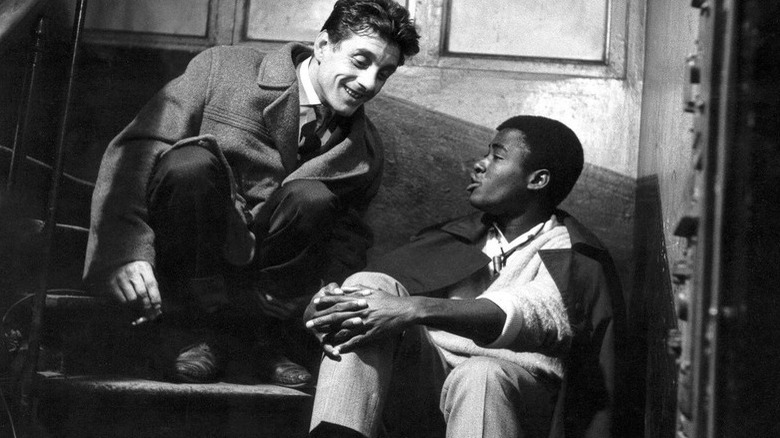
Documentarians Jean Rouch and Edgar Morin made their best film with "Chronicle of a Summer," which feels irrepressibly urgent despite being made in the early '60s. The pair interviewed a series of people who discussed their thoughts and feelings on the world around them, including topics like class and what it means to be happy. The filmmakers then crafted fictional stories based on those interviews, and ultimately showed the subjects the fictional films in order to capture their thoughts. It's a fascinating experiment that proves the remarkable power of human testimony, as well as a striking slice of cinema vérité.
Starring: Marceline Loridan, Regis Debray, Jean-Pierre Sergent
Director: Jean Rouch, Edgar Morin
Year: 1961
Runtime: 90 minutes
Rating: NR
Rotten Tomatoes Score: N/A
Citizenfour

Whistleblower Edward Snowden has unwittingly become one of the most fascinating people of the 21st century, and Laura Poitras' "Citizenfour" provides unparalleled access into his life. It's a fascinating, often maddening look at the NSA and its highly controversial — and law-breaking — activities.
The film has a compelling narrative: Filmmaker Laura Poitras began to receive encrypted emails from an anonymous source who claimed to have information on government surveillance. So, Poitras, alongside reporter Glenn Greenwald, traveled to Hong Kong to meet the person, who wound up being Snowden. "Citizenfour"is an urgent and important film about surveillance in a post-9/11 world and the ways that people's rights are constantly being trampled in favor of keeping people "safe."
Starring: Edward Snowden, Julian Assange, Jacob Applebaum
Director: Laura Poitras
Year: 2014
Runtime: 114 minutes
Rating: R
Rotten Tomatoes Score: 96%
Close-Up
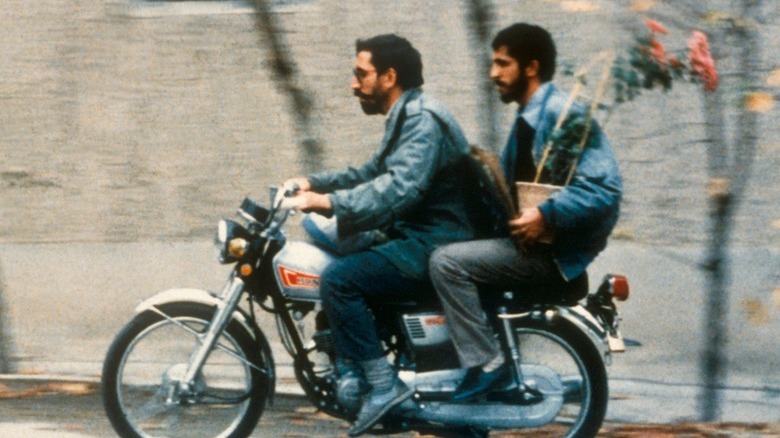
Iranian filmmaker Abbas Kiarostami blends fiction and documentary in the dazzling "Close-Up." This radical film uses a real-life event — the arrest of a man for impersonating filmmaker Mohsen Makhmalbaf — to launch a dense yet entertaining exploration of mythmaking, creation, film, and identity that's incredible to behold. The actors in the film play themselves, which creates a dizzying effect that makes it nearly impossible to tell whether what you're seeing is a reenactment or reality. Totally unique and deliciously complex, "Close-Up" is moviemaking at its most creative.
Starring: Hossain Sabzian, Mohsen Makhmalbaf, Abolfazi Ahankhah
Director: Abbas Kiarostami
Year: 1990
Runtime: 98 minutes
Rating: NR
Rotten Tomatoes Score: N/A
Collective
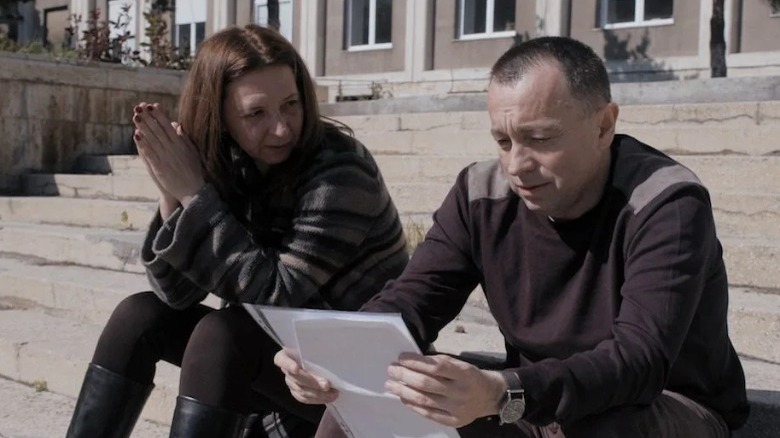
It's difficult to know what's going on behind closed doors, but sometimes incredibly brave people risk everything to open things up to the public. Alexander Nanau's "Collective," a harrowing Romanian drama, follows a group of journalists who uncover staggering levels of corruption following a nightclub fire that turned deadly. It's impossible to predict what will happen next, as each layer that's peeled back reveals more rot. "Collective" is an urgent and extremely compelling movie, and it has a distressingly timely message about the importance of a free press that goes far beyond the borders of Romania.
Starring: Dan Alexandru Condrea, Liviu Iolu, Razvan Lutac
Director: Alexander Nanau
Year: 2019
Runtime: 109 minutes
Rating: NR
Rotten Tomatoes Score: 99%
Crumb
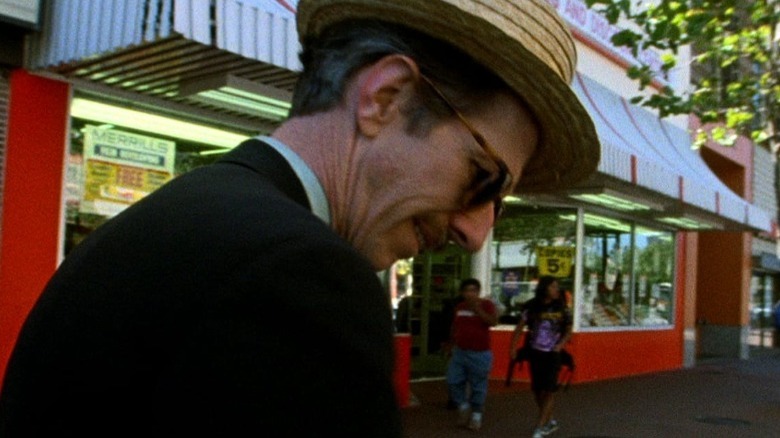
A portrait of an artist that's as deliciously off-beat as the man himself, Terry Zwigoff's "Crumb" explores the life of underground cartoonist Robert Crumb. As Crumb's lifelong friend, Zwigoff is granted intimate access to a subject who has no interest whatsoever in being in the public eye. Crumb is best known for his shocking, hilarious, and controversial comic strips, but the film takes a greater interest in the person behind the art, as well as his family, especially the wife he adores, Aline Kominsky-Crumb. If you're looking for a study of one of comics' stranger figures, look no further than "Crumb."
Starring: Robert Crumb, Aline Kominsky-Crumb, Charles Crumb
Director: Terry Zwigoff
Year: 1994
Runtime: 119 minutes
Rating: R
Rotten Tomatoes Score: 95%
Dear Zachary: A Letter To A Son About His Father
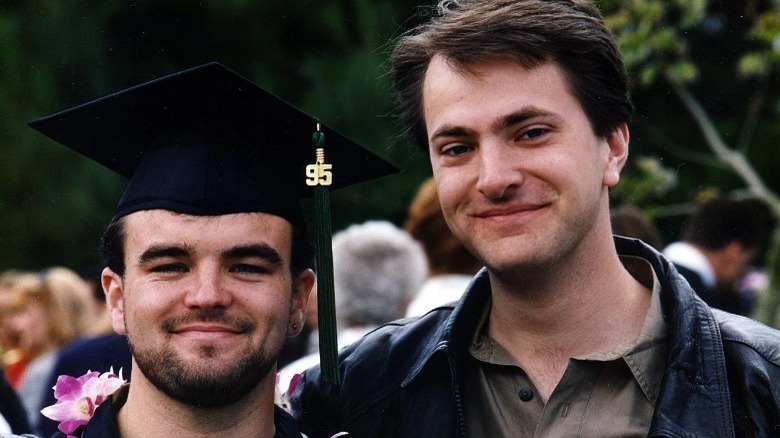
Many documentaries tell tales about major historical events or figures who are known by the masses. However, sometimes special stories rise to the top regardless of their scope. That's certainly the case with "Dear Zachary," a startlingly intimate film by Kurt Kuenne, who made it so that his best friend's son could see what an amazing man his murdered father was.
Plot twists are fairly rare in documentaries, but "Dear Zachary" keeps audiences guessing until the end. Fair warning: This is highly compelling but utterly devastating viewing, and there's almost no chance of you escaping its grip with dry eyes.
Starring: Kurt Kuenne
Director: Kurt Kuenne
Year: 2008
Runtime: 95 minutes
Rating: NR
Rotten Tomatoes Score: 94%
Dick Johnson Is Dead

With "Dick Johnson Is Dead," Kristen Johnson has crafted an exquisite portrait of aging and dying. It's a deeply meditative, sometimes crushing, and often uplifting movie, and as far as fascinating subjects go, Kristen's father Dick Johnson is as good as they get.
Dealing with her father at the end of his life, Kristen films a series of scenarios in which Dick "dies," which the duo use as a way of processing what's about to happen to them. It's personal cinema that should resonate with audiences far and wide. Johnson will have memories of her own father to treasure for the rest of her life; thanks to this film, so do we.
Starring: Dick Johnson, Kristen Johnson
Director: Kristen Johnson
Year: 2020
Runtime: 89 minutes
Rating: PG-13
Rotten Tomatoes Score: 100%
Don't Look Back
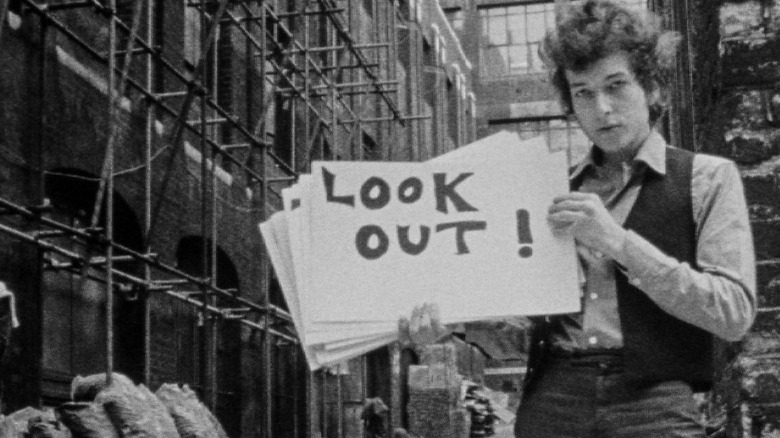
An exciting look into one of America's most fascinating musical icons, D.A. Pennebaker's "Don't Look Back" offers startlingly direct access to the one and only Bob Dylan. Documentaries about musicians are often filmed through rose-colored lenses, choosing only to focus on their glorious highs. Pennebaker's film refuses to do so, offering a complicated and raw portrait of an artist at the peak of his fame.
"Don't Look Back" finds Pennebaker following Dylan during his 1965 England tour, providing a look at his hotel conversations, how he spends his downtime during travel, and, of course, his concert appearances. "Don't Look Back" isn't just for Dylan fans, and is a worthwhile endeavor for anyone fascinated by the real people hiding behind artists' facades.
Starring: Bob Dylan, Bob Neuwirth, Joan Baez
Director: D.A. Pennebaker
Year: 1967
Runtime: 96 minutes
Rating: NR
Rotten Tomatoes Score: 91%
Enron: The Smartest Guys In The Room
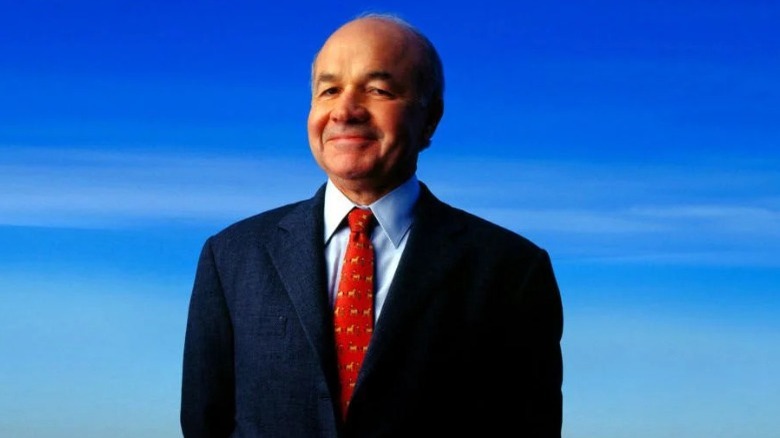
An incendiary look at the people who thought they were simply too big to fail, Alex Gibney's "Enron: The Smartest Guys in the Room" is jaw-dropping stuff. Gibney's film follows the extraordinary collapse of one of the biggest companies in history and the astonishing, nasty arrogance of those in charge, who were all too thrilled to do whatever they could to increase profits, be that through legal loopholes or plain old thievery. There is absolutely nothing that Enron wouldn't do to make money, and the documentary presents us with some of cinema's most unhinged villains. From the massive rise to the ugly fall, Gibney's film is a wildly compelling ride through corporate corruption.
Starring: Peter Coyle
Director: Alex Gibney
Year: 2005
Runtime: 113 minutes
Rating: R
Rotten Tomatoes Score: 97%
Faces Places
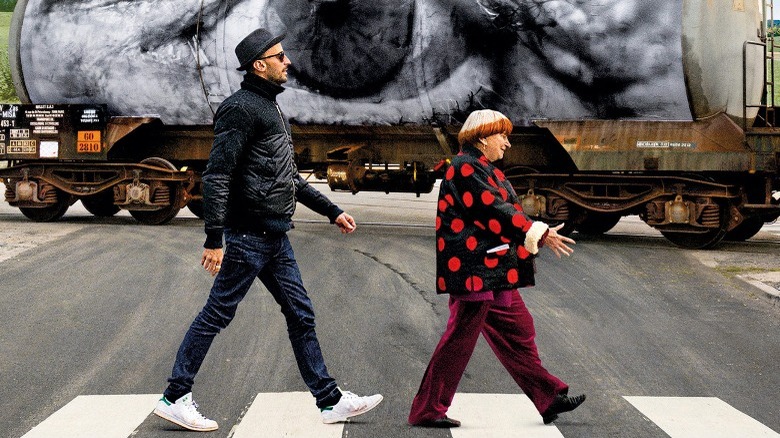
Agnès Varda was one of the world's great filmmakers. With "Cléo From 5 to 7," she became a pioneer of the French New Wave, and she also made a number of interesting and insightful documentaries. One of her most charming films is "Faces Places," which finds her and her companion JR traveling to small communities in France, photographing people, and then blowing up the results to create massive pieces of artwork in public places. The result is intoxicating — Varda has a control over filmmaking that most directors simply dream of.
Starring: Agnès Varda, JR
Director: Agnès Varda
Year: 2017
Runtime: 89 minutes
Rating: PG
Rotten Tomatoes Score: 99%
F For Fake
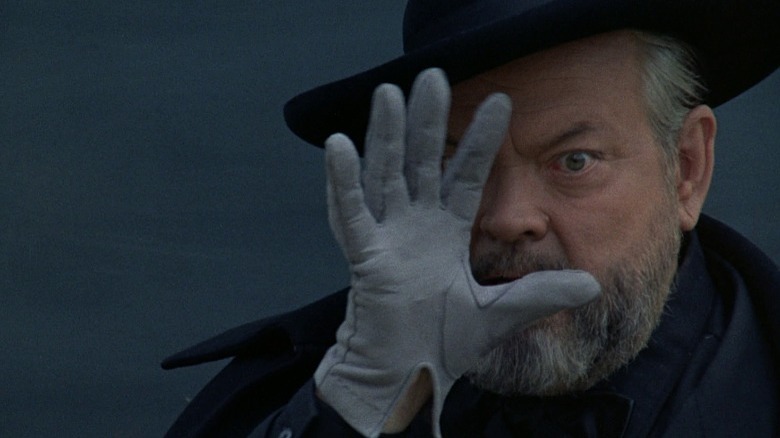
How can you know what is real? That's a concept that master filmmaker Orson Welles explored in his final film, the docudrama "F for Fake." The film initially presents itself as an investigation into notorious art forget Elmer de Hory and biographer Clifford Irving, who is best known for writing a completely fake autobiography of Howard Hughes. However, "F for Fake" quickly turns into a whirlwind experience that challenges the very ideas of fact and truth. Here, one of the world's most celebrated moviemakers is having a whole lot of fun while making you wonder who the real con artists actually are.
Starring: Orson Welles, Oja Kodar, Joseph Cotton
Director: Orson Welles
Year: 1973
Runtime: 88 minutes
Rating: PG
Rotten Tomatoes Score: 88%
For Sama

An awe-inspiring example of courageous personal filmmaking, "For Sama" is a heart-shattering masterwork. The horrors of war are all too often seen from a male perspective; here, however, Waad Al-Kataeb shows us the revolutions in Aleppo, Syria as seen through a woman's eyes. It's as much a personal document -- even under these terrifying conditions, Al-Kataeb finds love and has a child -- as it is a startling first-person account of living in a war-torn nation. Documentaries often shine a light on the past, but "For Sama" is overwhelming evidence that documentary is a powerful medium for capturing the present, too.
Starring: Waad Al-Kateab, Sama Al-Kateab, Hamza Al-Kateab
Director: Edward Watts, Waad Al-Kateab
Year: 2019
Runtime: 95 minutes
Rating: NR
Rotten Tomatoes Score: 98%
The Fog Of War
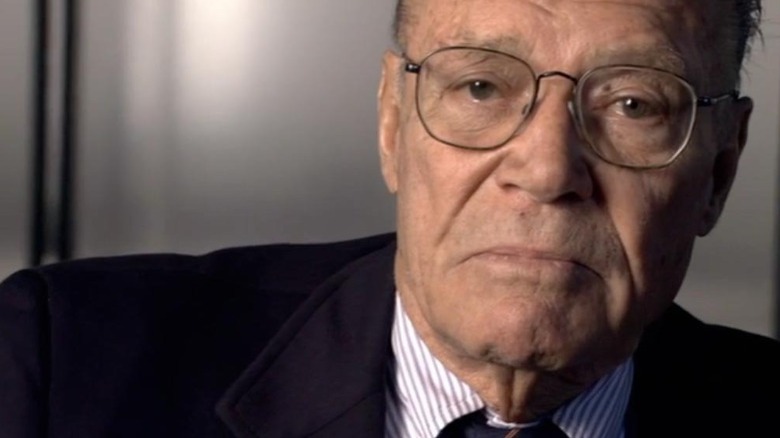
Errol Morris is one of the all-time great documentarians, tackling fascinating and controversial subjects with striking simplicity. For "The Fog of War," Morris sits down with Robert S. McNamara, the United States Secretary of Defense during the Kennedy and Johnson administrations, who was in charge during the first half of the Vietnam War. The film largely consists of McNamara himself as he confronts his own life, his career, and the decisions he's made, as well as some intense archival footage. "The Fog of War" is a bracing and insightful look at one of America's most talked-about military minds, and the unfettered access the film provides to the legendary figure is incredible. McNamara is a dream subject for a documentary, as he speaks candidly about his life and the complicated policies that defined his career.
Starring: Robert S. McNamara, Lyndon B. Johnson
Director: Errol Morris
Year: 2003
Runtime: 105 minutes
Rating: PG-13
Rotten Tomatoes Score: 96%
For All Mankind

Not to be confused with the Apple TV+ series of the same name, Al Reinert's "For All Mankind" takes a deep look at the moon landings and the Apollo Space Program of the 1960s and 1970s. The film tackles much more than just the first moon landing, though. It follows the lives of 24 different people who went to the moon over the course of nine different missions. Reinert's film brilliantly fuses all those different trips into one inspiring story, which allows everything to feel more intimate and keeps things from getting repetitive. "For All Mankind" is an awesome story about the power of the human spirit and how new technology can be used to accomplish extraordinary things.
Starring: Jim Lovell, Rusty Schweickart, Eugene Cernan
Director: Al Reinert
Year: 1989
Runtime: 90 minutes
Rating: NR
Rotten Tomatoes Score: 95%
Free Solo
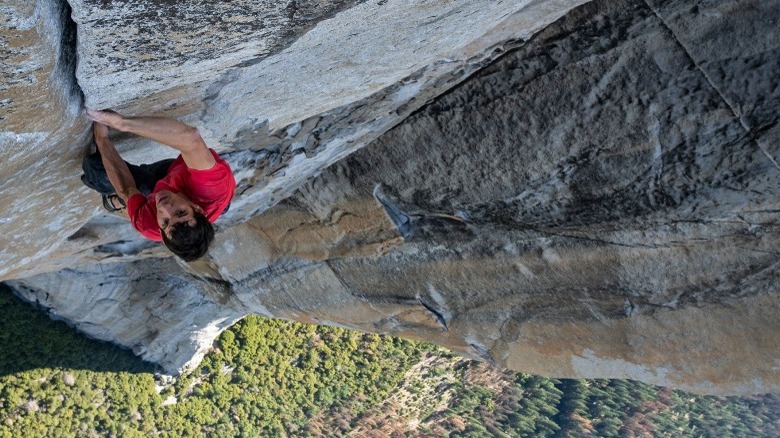
"Free Solo" is an exciting film about one individual's extraordinary physical feat. Alex Honnold, a professional rock climber, is after the holy grail of climbing: to become the first person to free solo climb El Capitan's vertical rock face, which is an awe-inspiring 900 meters in height. One single stumble or slip could result in Honnold's death — and you better believe that's a risk he's willing to take. While this testament to the human spirit is awesome, what really makes it exceptional is watching it all unfold. "Free Solo" is, quite simply, one of the most beautiful films ever made. Just take a moment to see how the directors filmed the climbing sequences and prepare to be amazed.
Starring: Alex Honnold, Tommy Caldwell, Sanni McCandless
Director: Elizabeth Chai Vasarhelyi, Jimmy Chin
Year: 2018
Runtime: 100 minutes
Rating: PG-13
Rotten Tomatoes Score: 97%
Gates Of Heaven
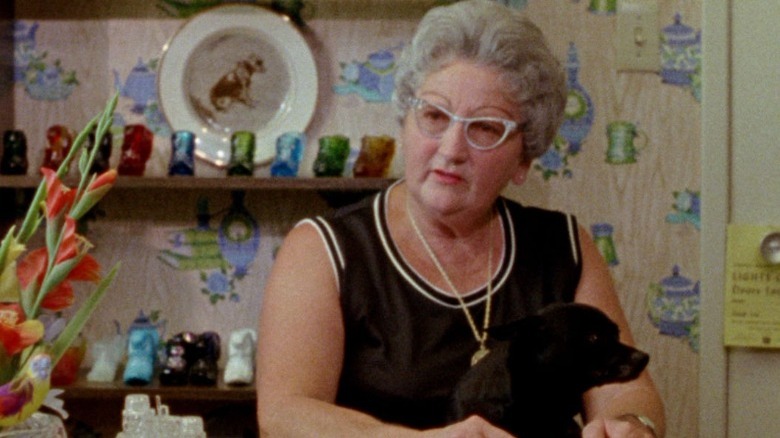
Documentarian Errol Morris' debut film, "Gates of Heaven" is a study of two pet cemeteries in California and the people involved in them. Morris seems keen to just let his subjects talk about whatever they like, which results in some startling and profound observations on life, love, and loss. The result is funny, sad, mystical, and hugely engaging and has no shortage of fans, including the legendary film critic Roger Ebert, who called it one of his 10 favorite films of all time.
Starring: Lucille Billingsley, Zella Graham, Cal Harberts
Director: Errol Morris
Year: 1978
Runtime: 85 minutes
Rating: NR
Rotten Tomatoes Score: 90%
Gimme Shelter

It feels like an act of serendipity that the Maysles and Charlotte Zwerin happened to be present during a major event in rock history. The Rolling Stones' free concert at Altamont Speedway was supposed to be a chance for the band's fans to enjoy some incredible music. However, a dreadful act of violence sent everything careening south, and what was intended to be a joyful celebration became a symbol of lost innocence and the crumbling of America's counterculture.
Starring: Mick Jagger, Keith Richards, Mick Taylor
Directors: Albert Maysles, David Maysles, Charlotte Zwerin
Year: 1970
Runtime: 91 minutes
Rating: PG-13
Rotten Tomatoes Score: 93%
The Gleaners And I

Agnès Varda's "The Gleaners and I" is a glimpse into the lives of gleaners, or people who sustain themselves by foraging through the things that other people discard. Varda takes such an intimate, caring approach to the material and shows such an authentic interest in the topic that unparalleled insights into her subjects inevitably follow. Strikingly, Varda makes a personal connection with the gleaners, leading her to considering her work as a filmmaker and gelaning's similarities to her own craft. A wonderful level of intimacy results, leaving the film with plenty to say about consumerism. "The Gleaners and I" is a showcase for a filmmaker 40 years into her career, and proves that, even at this point, Varda still had plenty of wisdom to share with the world.
Starring: Agnès Varda, Francois Wertheimer
Director: Agnès Varda
Year: 2000
Runtime: 82 minutes
Rating: NR
Rotten Tomatoes Score: 93%
Going Clear: Scientology & The Prison Of Belief
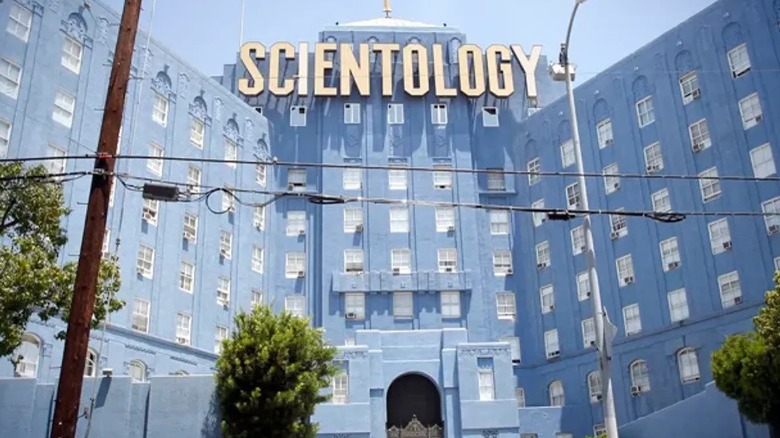
A damning indictment of the Church of Scientology, Alex Gibney's "Going Clear: Scientology & The Prison of Belief" is an intoxicating look at one of the world's most secretive religions. In order to properly investigate his subject, Gibney interviews a number of people who left Scientology behind, filming them as they reveal the systemic abuse and bizarre rituals that go on behind its closed doors. Gibney is deeply respectful to those brave enough to speak out, realizing that their stories need to be heard. If you're looking for a comprehensive tell-all on the controversies surrounding Scientology, there's no better place to start than Gibney's "Going Clear."
Starring: Alex Gibney, Marina Zenovich, Sherry Stringfield
Director: Alex Gibney
Year: 2015
Runtime: 119 minutes
Rating: NR
Rotten Tomatoes Score: 95%
Grey Gardens

Albert and David Maysles have made many fly-on-the-wall documentaries that explore the lives of fascinating subjects, but none are more oddly compelling than "Grey Gardens." Alongside filmmakers Ellen Hovde and Muffie Meyer, the Maysles brothers examine the lives of two relatives of Jackie Kennedy Onassis. In their vast Long Island estate, Edie Bouvier Beale and her mother Edith talk through their daily lives and their past experiences. Though the pair rarely step foot outside their dilapidated home, the film still manages to be full of insight and wonder, and Edie and Edith make for two of cinema's most fascinating character studies.
Starring: Edith Bouvier Beale, Edith "Little Edie" Bouvier Beale, Brooks Hyers
Directors: Albert Maysles, David Maysles, Ellen Hovde, Muffie Meyer
Year: 1975
Runtime: 95 minutes
Rating: PG
Rotten Tomatoes Score: 94%
Grizzly Man

Conventional wisdom tells us to keep our distance from bears; despite their fluffy appearances, they have the power to carve us up in the blink of an eye. Werner Herzog's "Grizzly Man" follows the life of Timothy Treadwell, a man who ignored this advice, left his civilian life behind, and lived amongst bears in Alaska's Katmai National Park. Herzog edited much of the documentary from footage that Treadwell shot himself, which plays a big part in creating an intimate portrait of a man who chose to do something that the vast majority of people wouldn't even dream of attempting. You can certainly guess how this story ends, but that doesn't make the journey any less exceptional.
Starring: Timothy Treadwell, Amie Huguenard
Director: Werner Herzog
Year: 2005
Runtime: 103 minutes
Rating: R
Rotten Tomatoes Score: 92%
Harlan County, USA
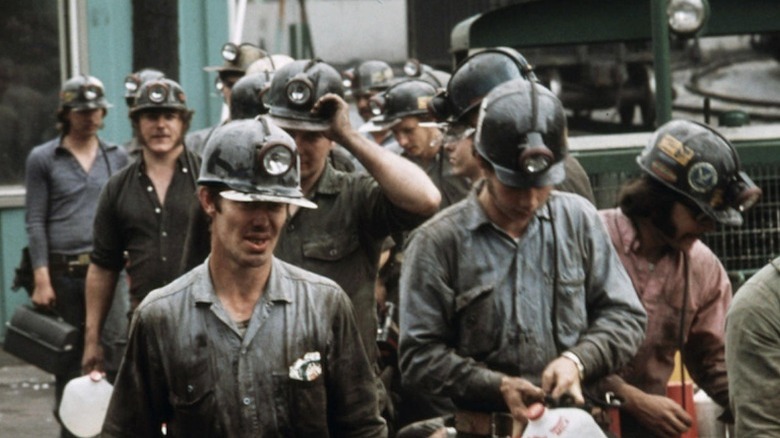
A testament to the incredible bravery of the American worker, Barbara Kopple's "Harlan County, USA" follows the 1973 conflict between Kentucky coal miners and their employer. The dispute, which came to be known as the Brookside Strike, was an incredible effort by the miners to unionize, drawing significant ire from the power company they worked for. Boldly, Kopple doesn't use narration in this documentary, instead relying on the words of the workers themselves to tell this story of perseverance. In an era when workers' rights feel more tenuous than ever, "Harlan County, USA" feels particularly vital.
Starring: John L. Lewis, Carl Horn, Norman Yarborough
Director: Barbara Kopple
Year: 1976
Runtime: 103 minutes
Rating: PG
Rotten Tomatoes Score: 100%
Hearts And Minds

Many documentaries interrogate events that have long since concluded, but Peter Davis' "Hearts and Minds" deals with the atrocities of the Vietnam War in the heat of the conflict. The title of the documentary comes from a quote from President Lyndon B. Johnson, who claimed that winning the war was about winning the "hearts and minds" of the Vietnamese people. Accordingly, this explicitly anti-war film is an incredibly tough watch, blending interviews with American military figures with footage of the devastating consequences of military action in Vietnam. It's startling, urgent, and expressive filmmaking that uses an immense number of sources to paint a devastating portrait of the horrors of an extremely unpopular war.
Starring: Tin Chan, Chau Diem, Kay Dvorshock
Director: Peter Davis
Year: 1974
Runtime: 112 minutes
Rating: R
Rotten Tomatoes Score: 90%
Hearts Of Darkness: A Filmmaker's Apocalypse
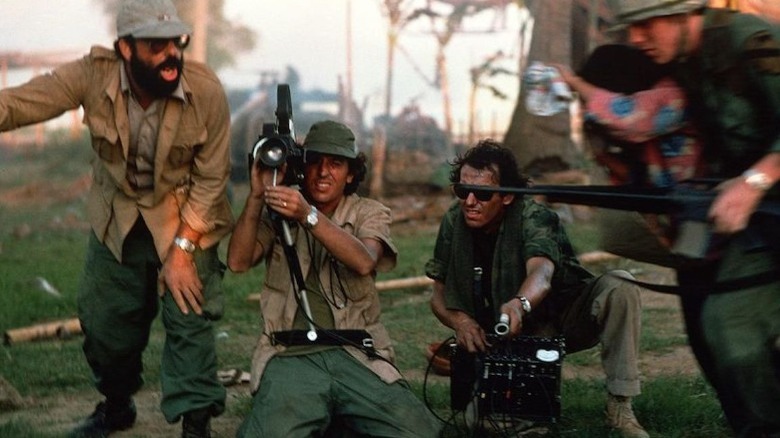
Though Francis Ford Coppola's "Apocalypse Now" is widely considered one of the greatest war movies of all time, it was incredibly tumultuous and fraught with peril behind the scenes. Borrowing the title of the Joseph Conrad novel on which "Apocalypse Now" is based, this documentary charts some of the truly wild things that were happening on the other side of the camera, including but not limited to threats of suicide, heart attacks, drug problems, and seemingly endless logistical issues. "A Filmmaker's Apocalypse" is a harrowing glance at the production process, reminding audiences that sometimes it takes unbelievable efforts to complete a movie.
Starring: Sam Bottoms, Marlon Brando, Colleen Camp
Directors: Fax Bahr, Eleanor Coppola, George Hickenlooper
Year: 1991
Runtime: 96 minutes
Rating: R
Rotten Tomatoes Score: 100%
Hoop Dreams
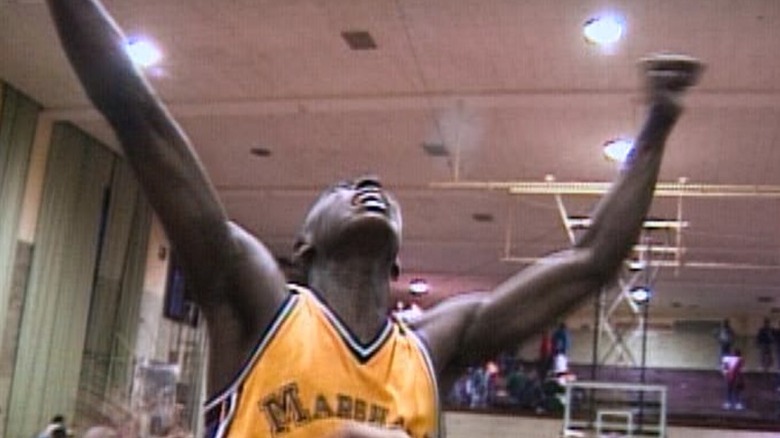
Under normal circumstances, achieving your dreams can be an incredible challenge. When you want to join the NBA and become a superstar, however, it can feel impossible. Steve James' epic three-hour documentary "Hoop Dreams" follows two inner-city kids from Chicago who aspire to make it big in the world of basketball. The film unfolds over a five-year period, navigating stunningly complicated athletic programs while shedding light on the hopeful athletes' family lives and their Chicago neighborhoods. It's a beautiful, inspiring, and fully-realized film that stands as one of America's finest sports stories.
Starring: Steve James, William Gates, Arthur Agee
Director: Steve James
Year: 1994
Runtime: 174 minutes
Rating: PG-13
Rotten Tomatoes Score: 98%
The Hour Of The Furnaces

A comprehensive behemoth of a movie, Fernando Solanas and Otavio Getino's "The Hour of the Furnaces" combines enormous amounts of archival footage, newsreels, and interviews with revolutionary fighters in order to craft an amazing portrait of Argentinian resistance. The film unfolds over three parts -- "Neocolonialism," "Act for Liberation," and "Violence and Liberation" -- as it charts more than 100 years of Argentine history. Making the film was an incredible act of courage, and it remains a wild, risk-taking experience that regularly upends expectations.
Starring: Maria de la Paz, Edgardo Suárez, Fernando Pino Solanas
Director: Fernando Solanas, Octavio Getino
Year: 1968
Runtime: 260 minutes
Rating: NR
Rotten Tomatoes Score: N/A
How To Survive A Plague
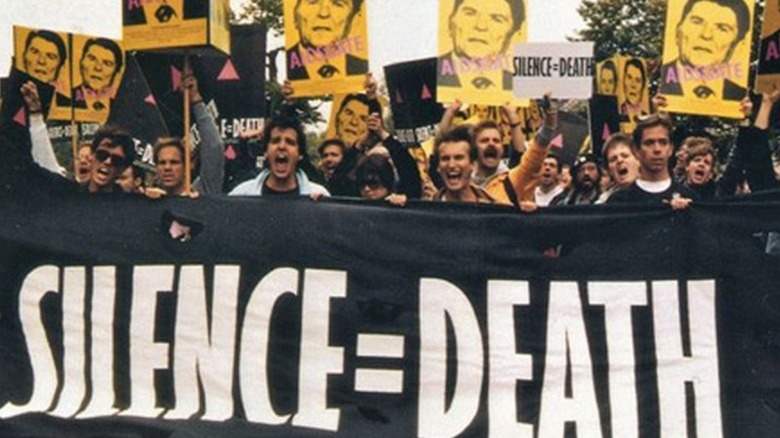
The AIDS epidemic of the 1980s devastated countless communities all over the world as governments declined to fund research into the disease and dragged their feet when it came to finding solutions (and that's putting it lightly). As such, activists were forced to step up. David France's terrific film "How to Survive a Plague" charts their efforts, particularly those of the groups ACT UP and TAG. The interviews with the activists themselves, who crushingly admit that they know they're going to die as a result of the virus, are particularly striking. "How to Survive a Plague" is equal parts rousing and heartbreaking, telling a story about the monumental bravery it takes to make your voice heard when your own government is against you.
Starring: David Barr, Jim Eigo, Ann Northrop
Director: David France
Year: 2012
Runtime: 110 minutes
Rating: NR
Rotten Tomatoes Score: 98%
The Imposter
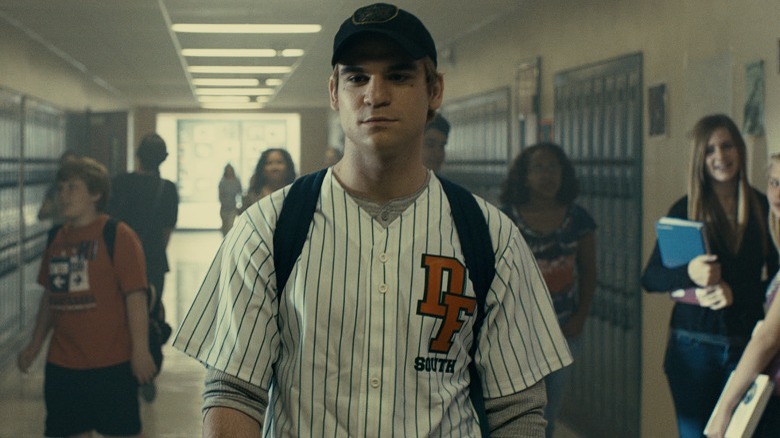
When it comes to stories about con artists, you expect to hear tales about elaborate heists, but "The Imposter" tells an entirely different — and far more personal — story. The film concerns a missing teenager in Texas in the '90s. He was presumed murdered, although his body was never found. A few years later, however, the boy appeared in Spain and was brought home, though something was undeniably different about him. It wasn't just his personality, either — his skin, eye color, and accent had all changed. Director Bart Layton handles the film like a narrative thriller, cleverly staging recreations to help tell this chilling stranger-than-fiction story. You simply must see "The Imposter" to believe it.
Starring: Adam O'Brien, Anna Ruben, Cathy Dresbach
Director: Bart Layton
Year: 2012
Runtime: 95 minutes
Rating: R
Rotten Tomatoes Score: 95%
I Am Not Your Negro

Director Raoul Peck uses the words of the exemplary American activist and writer James Baldwin to great effect in "I Am Not Your Negro." Baldwin envisioned a book that explored the lives and assassinations of three of his dear friends: Medgar Evers, Martin Luther King, and Malcolm X. However, that tome was never finished, so this wonderful and insightful film imagines the finished product. With Samuel L. Jackson serving as narrator, the film dives into Baldwin's life as well as those of some extraordinary activists, examining America's history of racism and making for urgent, important, and informative cinema.
Starring: Samuel L. Jackson
Director: Raoul Peck
Year: 2016
Runtime: 95 minutes
Rating: PG-13
Rotten Tomatoes Score: 99%
I Used To Be Normal: A Boyband Fangirl Story

Documentaries have a reputation for being heavy, and frankly, many of the films on this list support that theory. For something different and completely and utterly charming, however, check out "I Used to Be Normal: A Boyband Fangirl Story," which follows four different women from different generations who are wildly passionate about certain music groups. Take That, One Direction, The Beatles, and The Backstreet Boys are all fawned over in the film, but what makes this documentary really effective is its exploration of female affinity for pop music and the ways that fandom unites (and occasionally divides) us. This is an intoxicatingly wonderful movie for anyone who's ever obsessed over anything.
Starring: Elif Cam, Dara Donnelly, Susan Bower
Director: Jessica Leski
Year: 2018
Runtime: 93 minutes
Rating: NR
Rotten Tomatoes Score: 95%
In Jackson Heights

Frederick Weisman brings his impressively compassionate observational skills to Jackson Heights, a neighborhood in Queens, New York. Weisman has an uncanny ability to make you feel intimately involved with his subjects, and here it almost feels like you've been transported straight to Jackson Heights as you see the amazing community organizers' work. "In Jackson Heights" is vibrant and energetic, taking you through the many different viewpoints, cultures, and beliefs that make up the neighborhood. Weisman's unique approach to documentary filmmaking allows for a widespread and hugely enlightening view of one of America's most diverse places.
Starring: Laura Oblois
Director: Frederick Wiseman
Year: 2015
Runtime: 190 minutes
Rating: NR
Rotten Tomatoes Score: 96%
Jiro Dreams Of Sushi

"Jiro Dreams of Sushi," a profile of sushi master Jiro Ono, who owns a small 10-seat restaurant that's revered the world over for its jaw-dropping food, is a lovely movie. As Jiro approaches the later stages of his life, the film also features Jiro's two sons, who are both excellent sushi chefs in their own right. This delicately-observed film explores not only a particular chef and his meticulous methods, but also the fascinating culture surrounding sushi and the remarkable processes that bring the beloved Japanese delicacy to life. It's the perfect film to ignite your own passions — just don't watch it on an empty stomach!
Starring: Jiro Ono
Director: David Gelb
Year: 2011
Runtime: 81 minutes
Rating: PG
Rotten Tomatoes Score: 99%
The Kingmaker

An intimate and probing portrait of the former first lady of the Philippines, Imelda Marcos, Lauren Greenfield's "The Kingmaker" is remarkably revealing. The film explores numerous controversies faced by the Marcos family, many of which featured Imelda at their center. But it's more than that, too — as Marcos shows off her extraordinary home and outfits, Greenfield's film contrasts her life of privilege with the injustices faced by the Filipino people. With the Marcos family recently making a return to power, "The Kingmaker" feels like an eerily prescient harbinger of things to come.
Starring: Imelda Marcos
Director: Lauren Greenfield
Year: 2019
Runtime: 101 minutes
Rating: R
Rotten Tomatoes Score: 97%
The King Of Kong: A Fistful Of Quarters
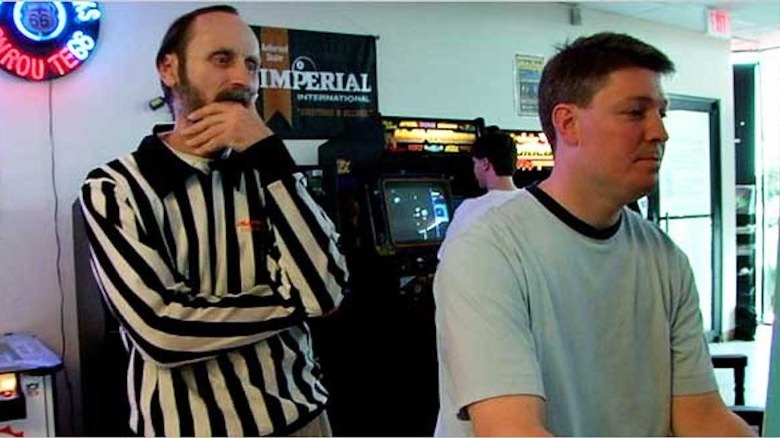
Watching people play video games against each other seems to become more popular with each passing day, but competitive gaming was a big part of the culture long before the advent of Twitch or esports. Appropriately, "The King of Kong: A Fistful of Quarters" takes us back to the era of arcades. For two decades, Billy Mitchell's "Donkey Kong" world record was unmatched. However, the long-reigning and highly controversial champion now faces a new challenger in math teacher Steve Wiebe, a man determined to beat Mitchell's high score at any cost. "The King of Kong" is an exciting exploration into the fierce world of arcade gaming, where the competition is just as intense as it is in any major league sports league.
Starring: Steve Wiebe, Mark Alpiger, Billy Mitchell
Director: Seth Gordon
Year: 2007
Runtime: 79 minutes
Rating: PG-13
Rotten Tomatoes Score: 97%
Koyaanisqatsi

"Koyaanisqatsi" (say that 10 times fast) is difficult to define. Directed by Godfrey Reggio, the film contains none of the things you'd expect from a documentary form. There are no talking heads, no narration, and no traditional narrative throughline. There's not even any dialogue. Instead, Reggio's experimental film uses only images and sounds to tell a story. The musical score, provided by renowned composer Philip Glass, is astonishing, though, providing a brilliant match to the footage of vast landscapes, moments of modern technology, and people going about their lives. This beguiling, richly compelling film has no defined meaning; as is so often the case with great art, everyone will walk away with a different interpretation as to what it means.
Director: Godfrey Reggio
Year: 1982
Runtime: 87 minutes
Rating: NR
Rotten Tomatoes Score: 90%
Land Without Bread

Luis Buñuel, one of the greatest filmmakers of all time, made just one documentary over his illustrious career: "Land Without Bread," a staggering portrait of degradation in Las Hurdes, an extremely poor area of Spain that's cut off from the rest of the country by mountains. As a no-nonsense narrator introduces us to the community, "Land Without Bread" can be upsetting viewing, but what's so intriguing about this documentary is that Buñuel may have faked it all. It features some startling animal cruelty -- at one point, a goat falls off a cliff as the film claims that not even the animals can handle the brutal terrain. However, it may turn out that Buñuel shot at the goat in order to cause the accident, fulfilling a narrative requirement. "Land Without Bread" may not be truthful, but its images still have the power to shock you out of complacency.
Starring: Abel Jacquin
Director: Luis Buñuel
Year: 1933
Runtime: 30 minutes
Rating: NR
Rotten Tomatoes Score: N/A
The Last Waltz
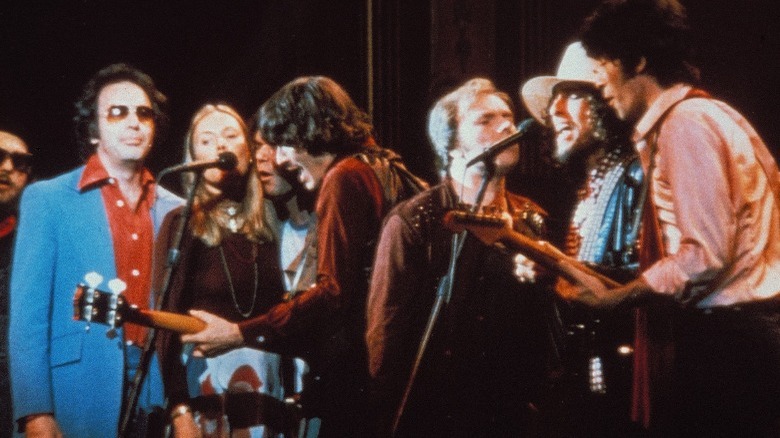
Is there anything that Martin Scorsese can't do? The answer is a resounding "no." While he may be best known for gangster flicks like "Goodfellas," Scorsese has made every possible kind of movie, including a number of documentaries. The best of his docs is "The Last Waltz," a joyous concert film documenting the final performance of The Band, during which countless music legends performed alongside the group, including Neil Young, Muddy Waters, and Bob Dylan. "The Last Waltz" is a celebration of the world of rock music, and it's so electric that it feels as if you're in the audience for the show yourself.
Starring: Robbie Robertson, Ringo Starr, Muddy Waters
Director: Martin Scorsese
Year: 1978
Runtime: 117 minutes
Rating: PG
Rotten Tomatoes Score: 98%
Le Sang Des Bêtes
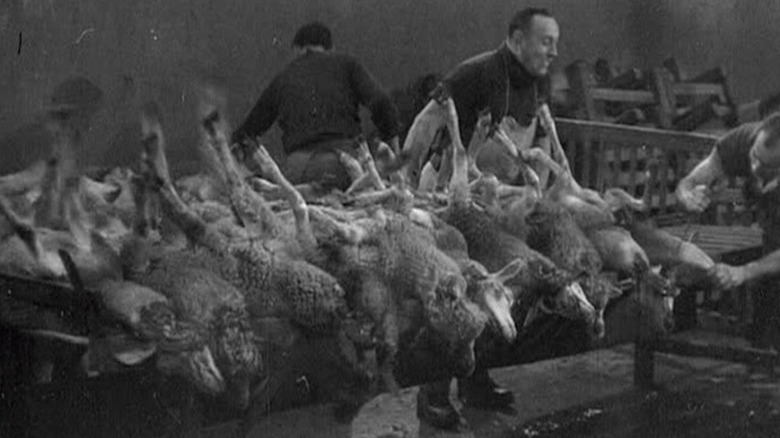
French filmmaker Georges Franju is best known for his thrillers like "Therese" and "Eyes Without a Face," but his impressive career started with documentary shorts, the most striking of which is "Le Sang des Bêtes" (Blood of the Beasts). The film cuts between harsh, unrelenting images of a slaughterhouse and the peaceful goings-on of a Parisian suburb. Its black and white cinematography is as brutal as it is beautiful, and its clear-cut narration refuses to hold anything back.
Starring: Georges Hubert, Nicole Ladmiral
Director: Georges Franju
Year: 1949
Runtime: 20 minutes
Rating: NR
Rotten Tomatoes Score: N/A
Let There Be Light

In 1945, the U.S. Army commissioned John Huston to make a documentary about PTSD with a pro-war spin, but the end result was deemed counterproductive to America's postwar efforts and it wasn't officially shown until the 1980s. That outcome was largely due to Huston's determination to make a film that reflected the reality of those who came home from the war rather than a propaganda picture. In that sense, he succeeded. "Let There Be Light" is a stunning movie that looks at the mental health of veterans recovering at Mason General Hospital in Long Island, something that may not seem like a big deal today but that was revolutionary in the 1940s. This brave movie tackles post-traumatic stress disorder (PTSD) during a time when it was more commonly known as "shell shock."
Starring: Walter Huston
Director: John Huston
Year: 1946
Runtime: 59 minutes
Rating: NR
Rotten Tomatoes Score: 83%
The Living Desert

Nature documentaries are all the rage these days — shows like "Planet Earth" have used cutting-edge technology to capture animals and their environments with a level of detail never before thought possible. However, you may be surprised to discover that nature docs have actually been around for quite some time, and Disney made one of the most successful ones back in 1953. "The Living Desert" features some truly striking imagery and allowed people to see the amazing world of the desert in Tucson, Arizona up close and personal. It's much lighter in tone than the nature docs of today, but that didn't stop this delightful movie from snagging the Oscar for best documentary.
Starring: Winston Hibler
Director: James Algar
Year: 1953
Runtime: 70 minutes
Rating: G
Rotten Tomatoes Score: N/A
The Look Of Silence
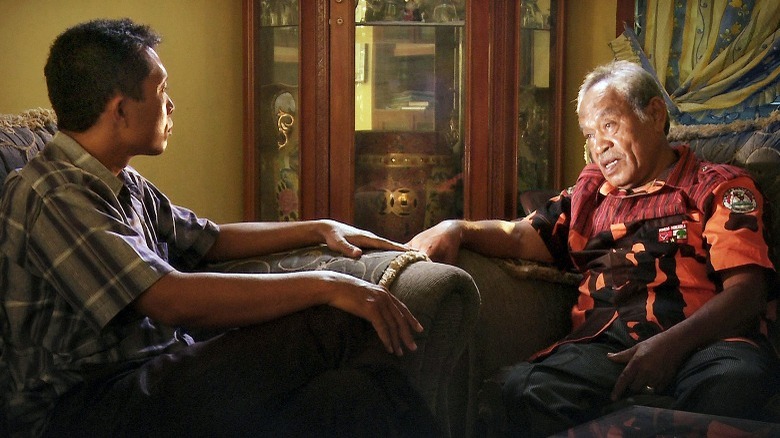
After making "The Act of Killing," Joshua Oppenheimer made a companion piece that is no less essential than its predecessor. "The Look of Silence" follows a man whose brother was killed in the Indonesian Communist Purge of 1965 and his confrontations with some of the men who carried out those horrifying acts. The haunting story makes for a remarkable contrast with Oppenheimer's stunning imagery as the film boldly documents a man's quest for answers in a nation still ruled by those who committed the crimes. The only thing more chilling than the quest itself is the perpetrators' seeming lack of remorse. It's jaw-dropping cinema.
Starring: Joshua Oppenheimer
Director: Joshua Oppenheimer
Year: 2014
Runtime: 99 minutes
Rating: PG-13
Rotten Tomatoes Score: 96%
Los Angeles Plays Itself

A must-watch for cinephiles, Thom Andersen's "Los Angeles Plays Itself" explores the famous city of Los Angeles through the films that are set there. Andersen's vast knowledge of the city is brought to light with footage from countless movies, offering rich insights into movie-making, architecture, and city life. If you've ever been fascinated by how locations are used in movies, place "Los Angeles Plays Itself" at the very top of your watchlist.
Starring: Encke King
Director: Thom Andersen
Year: 2003
Runtime: 169 minutes
Rating: NR
Rotten Tomatoes Score: 96%
Man On Wire
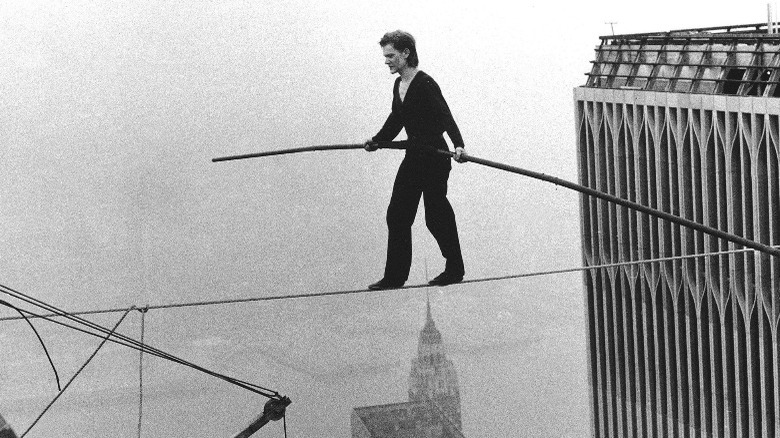
A story about the incredible will of a genuine daredevil, James Marsh's "Man on Wire" takes us back to 1974, when Philippe Petit dared to walk on a high wire between the Twin Towers. This was very much not allowed, and Petit was threatened with arrest if he were to go ahead with his plan -- which, of course, he did. Marsh was clearly influenced by heist movies on "Man on Wire," where he uses footage of Petit preparing for the big event alongside re-enactments and contemporary interviews. The events unfold with the giddy excitement of "Ocean's Eleven," but this incredible feat is all real.
Starring: Philippe Petit, Annie Alix, Jean François Heckel
Director: James Marsh
Year: 2008
Runtime: 90 minutes
Rating: PG-13
Rotten Tomatoes Score: 100%
The Man With A Movie Camera
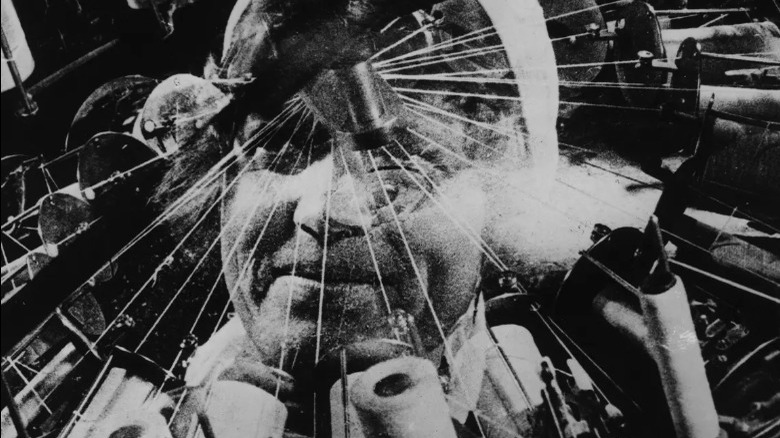
Despite being made nearly 100 years ago, Dziga Vertov's "The Man with a Movie Camera" feels incredibly modern. This experimental documentary from the silent era explores the cities of Moscow, Kyiv, and Odessa, observing civilians as they work and get some much-needed rest and relaxation. You've never seen anything like it, and you probably never will again. "The Man with a Movie Camera" has some of the most astonishing visual effects and editing tricks ever put on camera, made all the more remarkable by the fact that all the editing was done by hand. The film is an absolute necessity for anyone interested in filmmaking techniques. Sight & Sound called it the greatest documentary of all time, and the publication might just be onto something.
Starring: Mikhail Kaufman
Director: Dziga Vertov
Year: 1929
Runtime: 69 minutes
Rating: NR
Rotten Tomatoes Score: 97%
Mea Maxima Culpa: Silence In The House Of God
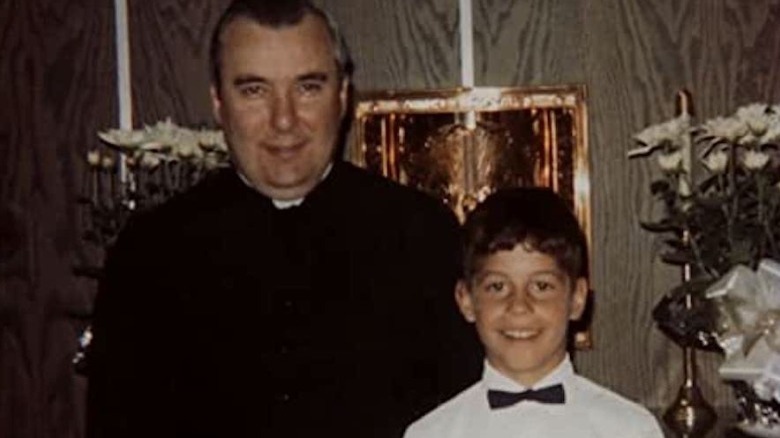
Alex Gibney's harrowing "Mea Maxima Culpa: Silence in the House of God" tackles a sensitive subject with a potent blend of sensitivity and outrage. The documentary looks at sex abuse in the Catholic Church, focusing specifically on incidents St. John's School for the Deaf. Four brave deaf men sought to bring light to the abuse they suffered at the hands of a priest in the 1960s, when they were students at the institution. The case was the first of its kind in the United States and fundamentally changed the way people looked at organized religion. Gibney's film is shocking, heartbreaking, and vital, celebrating the courage of the four men who spoke out against one of the world's most powerful organizations.
Starring: Alex Gibney, Jamey Sheridan, Chris Cooper
Director: Alex Gibney
Year: 2012
Runtime: 107 minutes
Rating: NR
Rotten Tomatoes Score: 98%
Minding The Gap

"As long as I'm able to go skate, I'm completely fine," says Keire Johnson in "Minding the Gap." Director Bing Liu uses a lifetime of footage taken in his hometown of Rockford, Illinois to reconstruct both his own life, as well as those of his childhood friends. As the trio approach adulthood in different ways, the film offers not only some fantastic skateboarding sequences, but also a tremendously intimate study on growing up and how even those who come of age together can have vastly different life experiences. "Minding the Gap" is an emotional and effective look at masculinity, race, and reconciliation.
Starring: Bing Liu, Keire Johnson, Zack Mulligan
Director: Bing Liu
Year: 2018
Runtime: 93 minutes
Rating: NR
Rotten Tomatoes Score: 100%
Nanook Of The North

One of the earliest examples of a feature-length documentary, Robert J. Flaherty's "Nanook of the North" was groundbreaking when it was released in 1922. It's often thought to be the very first documentary, though Flaherty's film isn't entirely factual. In fact, the protagonist, Nanook, is actually named Allakariallak, and Nanook's wife isn't actually his wife at all. Still, despite not being quite committed to telling the truth, "Nanook of the North" is still a major achievement in cinema, one that transported audiences to the Arctic and showed them a way of life previously unseen by the masses.
Starring: Allakariallak, Nyla, Cunayou
Director: Robert J. Flaherty
Year: 1922
Runtime: 79 minutes
Rating: NR
Rotten Tomatoes Score: 100%
Near Death

Frederick Wiseman's observational verité approach brings a humane dignity to the literally titled "Near Death." Looking into the Medical Intensive Care Unit at the Beth Israel Hospital in Boston, we see the lives of the doctors and hospital staff, patients in their final moments, and those patients' families. It's a tapestry of powerful decisions and illuminating discussions on the complex nature of life-sustaining treatments. A nearly six-hour film about people at the end of their life is as difficult to watch as you may expect, but it's also full of rich observations that are equal parts devastating and enlightening.
Director: Frederick Wiseman
Year: 1989
Runtime: 358 minutes
Rating: NR
Rotten Tomatoes Score: N/A
Nuit Et Brouillard
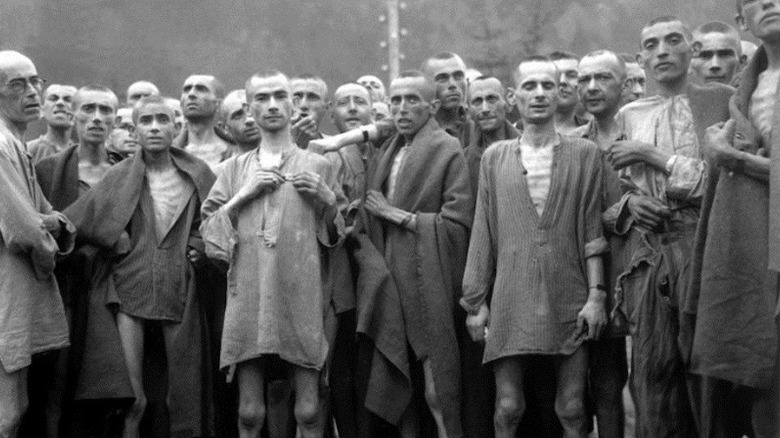
Alan Resnais' "Nuit et Brouillard" ("Night and Fog") packs the vast atrocities of the Holocaust into its brief half-an-hour runtime. Written by Jean Cayrol, himself a concentration camp survivor, the film brings audiences face to face with the devastating lack of humanity that led to one of the world's most disgraceful events. "Nuit et Brouillard" does more than just show real-life horrors -- it forces the viewer to question their own sense of humanity and how something like this could have happened. Resnais' film is an eye-opening and stressful experience, but its rewards far outweigh the difficulty of getting through it.
Starring: Michel Bouquet
Director: Alain Resnais
Year: 1955
Runtime: 32 minutes
Rating: NR
Rotten Tomatoes Score: 100%
O.J.: Made In America
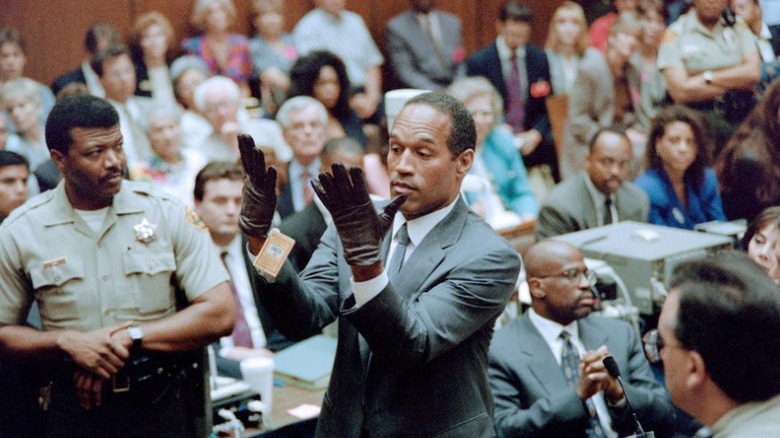
The O.J. Simpson trial is one of the most-discussed events in recent American history -- it's been referenced in countless films and television, and even got its own miniseries in "The People vs. O.J. Simpson." Ezra Edelman's massive seven-and-a-half-hour-long documentary, "O.J.: Made in America," is an extraordinary achievement, taking the case and examining it in the context of American identity, which is rich, complicated, and rife with contradictions. Edelman's film is as expansive and it is incisive, covering the O.J. trial in great detail, but it's also impressively nuanced, honing in on the intersection between celebrity, race, injustice, and the American Dream.
Starring: O.J. Simpson, Kareem Abdul-Jabar, Mike Albanese
Director: Ezra Edelman
Year: 2016
Runtime: 467 minutes
Rating: NR
Rotten Tomatoes Score: 100%
Paris Is Burning
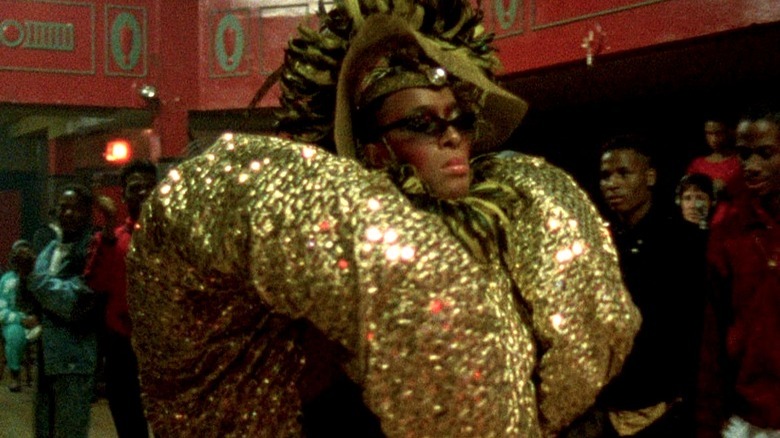
The best documentaries showcase a world that you never even knew existed. Jennie Livingston's wondrous and exhilarating "Paris Is Burning" explores the ball scene in New York City, which brought together all sorts of queer people (especially people of color and transgender people) and allowed them to dress extravagantly and dance in their own celebratory spaces. It's uplifting to see these rich characters live their lives to the fullest, especially when they're so often shunned by mainstream society. "Paris Is Burning" doesn't shy away from the harsher realities of being queer, however, highlighting homelessness, abandonment, drug use, murder, and other issues that often afflict LGBTQ+ peoples. "Paris is Burning" is a beautiful tapestry and vital ode to the resilience of the queer community.
Starring: Freddie Pendavis, Willi Ninja, André Christian
Director: Jennie Livingston
Year: 1990
Runtime: 78 minutes
Rating: R
Rotten Tomatoes Score: 98%
Primate

Frederick Wiseman's "Primate" delves into the daily lives of the scientists and primates at the Yerkes Primate Research Center in Atlanta, Georgia. The film is primarily intrigued by the power dynamics between the subjects and researchers, as well as what it means to observe. Interestingly, Wiseman approaches the scientists like the scientists approach the animals, allowing his camera to observe the strict procedures the researchers put the primates under. It's a sometimes-shocking, no-holds-barred look that really makes you wonder exactly what these experiments, which often seem like torture, are really for.
Director: Frederick Wiseman
Year: 1974
Runtime: 105 minutes
Rating: NR
Rotten Tomatoes Score: N/A
The Queen Of Versailles

Jackie and David Siegel have it all, but even that's not enough: The couple are in the process of building the single largest house in the entire United States. The extravagant, 900,000 square-foot mansion (for the record, that's even bigger than the White House) is being built with the palace of Versailles in mind. However, the 2008 market crash changed everything for the Siegel family, who went from being billionaires to ... well, still being unbelievably wealthy. "The Queen of Versailles" is frequently infuriating, fascinating, hilarious, and depressing, as Greenfield paints a portrait of wealth that's as outlandish as it is insidious.
Starring: Jackie Siegel, Lorraine Barrett
Director: Lauren Greenfield
Year: 2012
Runtime: 100 minutes
Rating: PG
Rotten Tomatoes Score: 95%
Roger & Me
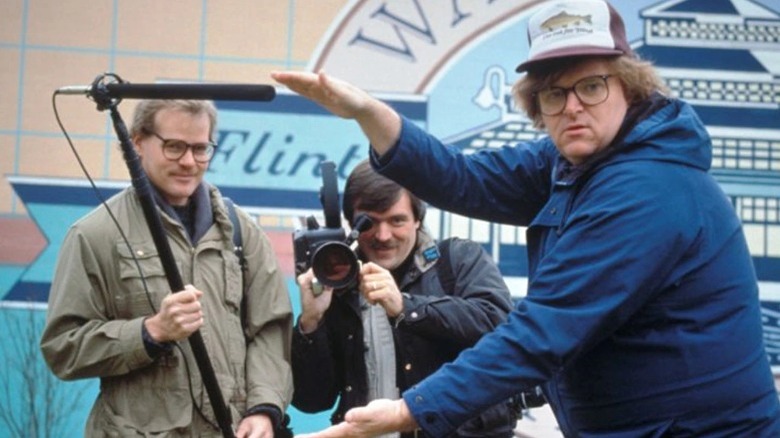
Michael Moore is best known for films like "Fahrenheit 9/11" and "Bowling for Columbine," but his first documentary, "Roger & Me," remains both his most personal and also his best. After the closure of a General Motors plant in his hometown of Flint, Michigan, Moore goes on a mission to meet Roger Smith, chairman of GM, for answers. It proves far more difficult than you may think. Along the way, Moore crosses paths with fascinating people from Flint who will be devastated by the factory closure. "Roger & Me" makes it clear that Michael Moore was a fearless filmmaker right from the jump.
Starring: Michael Moore, James Blanchard, Pat Boone
Director: Michael Moore
Year: 1989
Runtime: 91 minutes
Rating: R
Rotten Tomatoes Score: 100%
Salaam Cinema
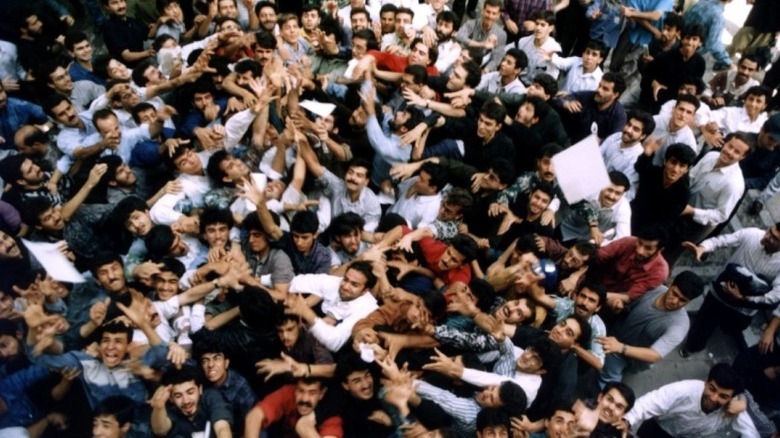
Iranian filmmaker Moshen Makhmalbaf (the subject of Kiarostami's "Close Up," also on this list) directs "Salaam Cinema," a joyous look at the passion that goes along with being in the movies. The film follows Makhmalbaf as he prepares to make a film celebrating the 100-year anniversary of cinema. When he places an ad in a newspaper looking for 100 people to be in the film, thousands arrive, all hoping for their big opportunity. Most of the film sees Makhmalbaf going through the auditions, speaking to men and women whose stories paint a vivid and diverse portrait of life in Iran. It's a surprising and lovely film that reminds us how important the movies are to people all over the world.
Starring: Azadeh Zanganeh, Maryam Keyhan, Shaghayegh Djodat
Director: Moshen Makhmalbaf
Year: 1995
Runtime: 75 minutes
Rating: NR
Rotten Tomatoes Score: N/A
Salesman
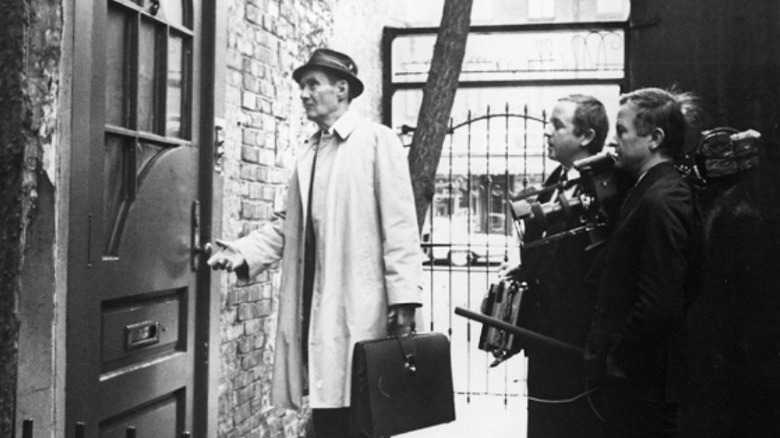
The Maysles brothers and Charlotte Zwerin give refreshing life and humanity to the door-to-door salesman in the aptly titled "Salesman." Following four Bible salesmen as they attempt to make a living in a world that appears to be increasingly uninterested in what they have to offer, this documentary is a tremendous example of cinema verité. The directors allow the story to unfold on its own, simply observing the action without any sense of judgment whatsoever. It's a fascinating fly-on-the-wall experience that captures typical American malaise — the salesmen encounter never-ending apathy — and the undying love of good old-fashioned consumerism.
Starring: Jamie Baker, Paul Brennan, Melbourne I. Feltman
Director: Albert Maysles, David Maysles, Charlotte Zwerin
Year: 1969
Runtime: 90 minutes
Rating: G
Rotten Tomatoes Score: 100%
The Salt Of The Earth

Wim Wenders is often drawn to the intricacies of human life, so having him document the story of photographer Sebastião Salgado is perfect. Salgado's career is truly remarkable, as he's traveled all over the world looking to capture people and places you've never heard of or seen, with a particular focus on hidden societies. As Wenders charts Salgado's career, the film doubles as an amazing tribute to the incredibly vast, often unexpected beauty of our planet. "The Salt of the Earth" is one of the most visually adventurous movies ever made, overflowing with striking and surprising imagery.
Starring: Sebastião Salgado
Directors: Wim Wenders, Juliano Ribeiro Salgado
Year: 2014
Runtime: 109 minutes
Rating: PG-13
Rotten Tomatoes Score: 95%
Samsara

A kaleidoscopic tour of the world, Ron Fricke's beautiful travelog "Samsara" feels positively transportive. Unfolding purely with images and sound, there is no narration and no distractions to be found. A glorious visual odyssey, Fricke's film is unlike anything else out there, exploring 25 different countries with a painstaking attention to detail and beauty. A sequence featuring the Balinese Tari Legong Dancers is a particularly mesmerizing highlight. If you're yearning to travel, "Samsara" provides plenty of jaw-dropping inspiration.
Starring: Balinese Tari Legong Dancers, Hiroshi Ishiguro
Director: Ron Fricke
Year: 2011
Runtime: 102 minutes
Rating: PG-13
Rotten Tomatoes Score: 76%
Sans Soleil

Chris Marker's otherworldly "Sans Soleil" unfolds almost like a stream of consciousness as the narrator remarks on everything under the sun, from Japanese horror movies to emus living in France. It's international in scope, traveling through time and space as Marker examines humanity using footage from every end of the planet. Every viewing of "Sans Soleil" leads to new discoveries that are simultaneously radical and conventional. If that sounds confusing, that's because "Sans Soleil" is a mysterious puzzle that can never be truly solved. Thankfully, it's a thrill watching it all unfold anyway, and its images are consistently breathtaking.
Director: Chris Marker
Year: 1982
Runtime: 100 minutes
Rating: NR
Rotten Tomatoes Score: 86%
Searching For Sugar Man

There's an expectation that, with music documentaries, you're going to get exactly what you expect when you go in. However, Malik Bendjelloul's "Searching for Sugar Man" offers twist after twist, delicately layering in surprises and delights in equal measure. The film follows two men in Cape Town, South Africa, and their quest to find out what happened to their musical hero, American singer-songwriter Sixto Rodriguez. Given all the weight that documentaries often carry, "Searching for Sugar Man" is surprisingly heartwarming and life-affirming.
Starring: Stephen Segerman, Dennis Coffey, Mike Theodore
Director: Malik Bendjelloul
Year: 2011
Runtime: 86 minutes
Rating: PG-13
NFTs in Games Are a Nightmare, Says Dev During Surprising Talk

NFTs (non-fungible tokens) and blockchain technology have become a big topic within the games industry in the past year or so. Many big companies have attempted or are still attempting to add NFTs. GSC Game World famously announced the STALKER Metaverse only to backtrack a few days later; Ubisoft introduced the first NFTs in a triple-A game to Tom Clancy's Ghost Recon: Breakpoint; Square Enix aims to eventually introduce 'story-focused NFTs' to its games; SEGA says NFTs are part of the future gaming alongside cloud services; and, last but not least, Tomonobu Itagaki just announced a PC MMO that revolves entirely around trading digital tokens.
That's not to say there isn't any opposition. Indie game store Itch.io publically stated they believe NFTs are a scam; Warren Spector, the creator of System Shock and Deus Ex, said they are ridiculous; Blizzard promised not to engage in any of that, and even Electronic Arts doesn't have current plans in the area.
A few days ago, Mark Venturelli (CEO of Rogue Snail, the studio behind the upcoming game Relic Hunters Legend) joined the chorus with a surprising talk delivered at Brazil's International Games Festival. The session's original title was 'The Future of Game Design', but Venturelli actually delivered an anti-NFTs talk, much to the dismay of some of the sponsors involved in the event.
Speaking to PC Gamer after the talk, Venturelli explained:
It was a bit of a gimmick. I start, 'Hey, this talk is about the future of gaming'. And then I start talking about it, and I say, 'Well, actually, fooled you!' This talk is not about the future of game design, because I start talking about all the trends that I've seen in my 15 years in the industry, and now we have new trends, let's talk about them. That's when I scratch the name of the talk and say, 'Why NFTs are a nightmare.'
I've heard that the sponsors got really mad. They tried to break into the talk while I was talking, but the organization would not let them. That doesn't surprise me, because the organization, not at a single point did they censor me, did they stop me from putting what I wanted on the slides. I gave them access to the slides before the talk. There was never any kind of intention on their side to shut me up or anything like that.
Venturelli also said that the idea of allowing players to get some real value by reselling game items once they're moving on to another game is not at all sound, as in such economies big groups would strangle individuals.
This is such a naive proposition. The expectation versus reality here is so bizarrely far apart because what's actually going to happen is that organized groups are going to operate and scale with ever-diminishing margins, and just push out everybody else. Because that's what happens. If you play EVE Online or Runescape, or any other game that simulates economy, that's what happens. Organized groups are going to fucking crush you. What actually is going to happen is that if you just naively play a game and have fun—imagine that—then you want to sell your stuff, your stuff is not going to be worth anything. It's gonna be worth fractions of a cent, but what you give in return for that fraction of a cent is that you're completely powerless now. Your fantasy, your ability to be impactful in the world as an individual is gone, because now it is controlled by these guys.
You can watch a recording of Venturelli's Why NFTs are a nightmare talk below, though beware that it is delivered in Brazilian Portuguese.
The post NFTs in Games Are a Nightmare, Says Dev During Surprising Talk by Alessio Palumbo appeared first on Wccftech.
Evil Dead: The Game’s Army Of Darkness update just dropped with single-player mode
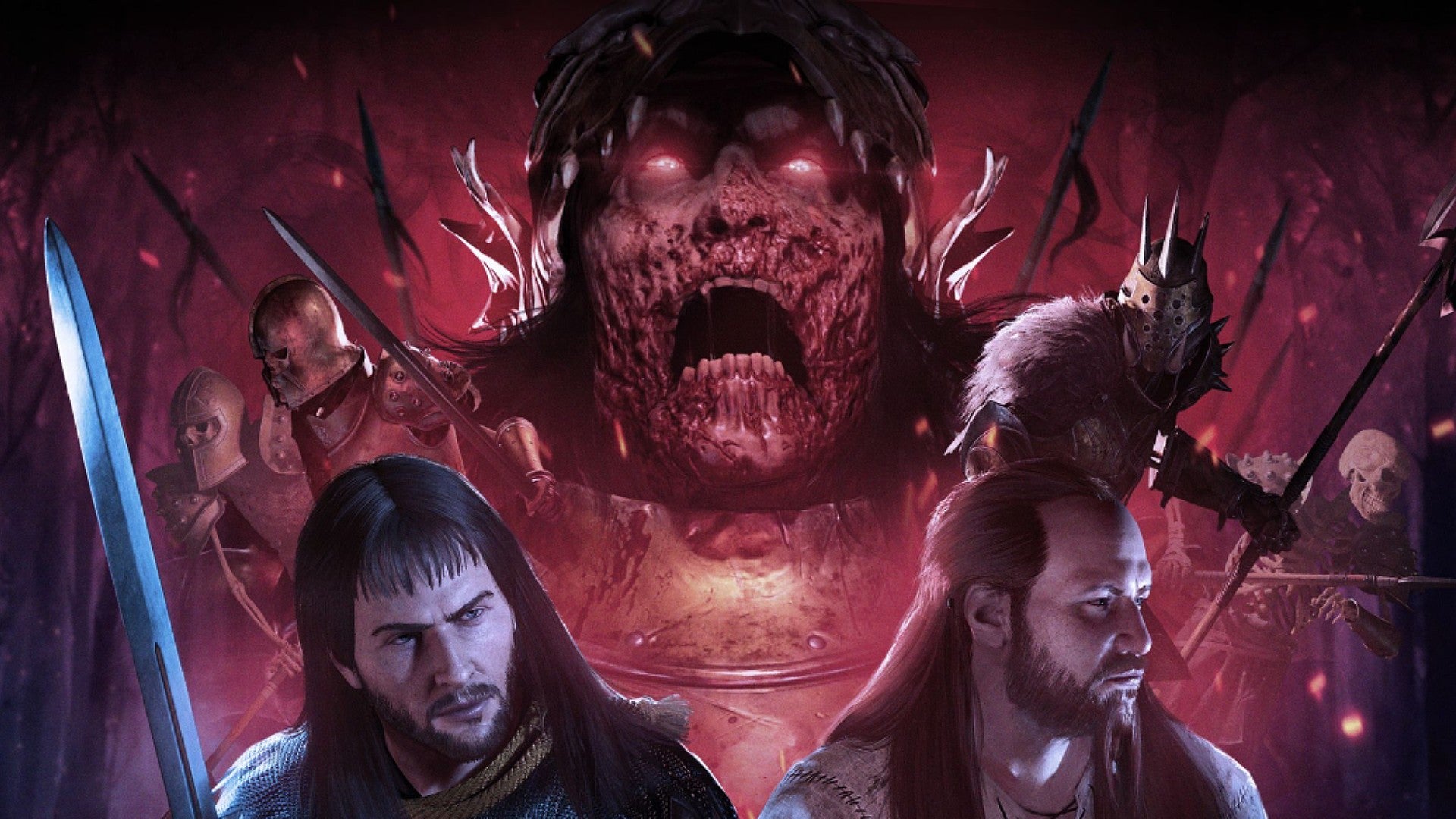
Army Of Darkness, perhaps the best movie in Sam Raimi's horror series, has hopped through time to arrive in Evil Dead: The Game with an update today. It brings a new map, two suitably medieval and marvellously chunky weapons, and some premium outfits. Hail to the King by watching the trailer below.
Tiktok creator puts diamonds in gaming PC, lowers CPU temps

A Tiktok gaming PC creator has discovered a new way to bring CPU temps down, and it involves mixing the thermal paste with diamonds. While this expensive idea sounds absurd, it could actually come with performance boons and help boost fps in demanding games.
RELATED LINKS: Best SSD for gaming, How to build a gaming PC, Best gaming CPU
There's A Reason Why Darth Vader Never Uses Force Lightning
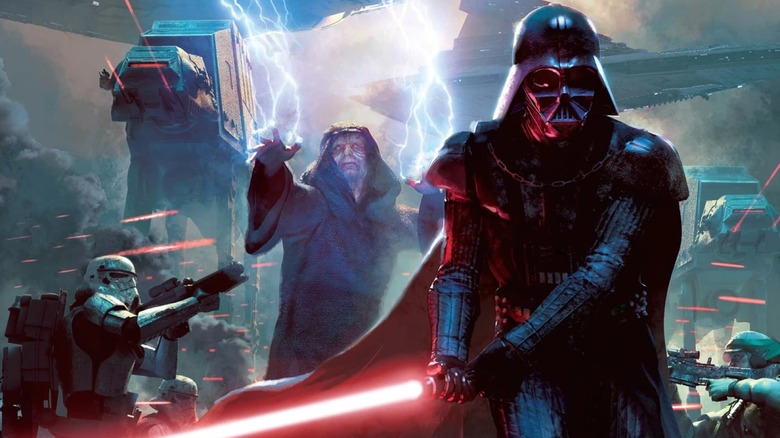
Force lightning is something that has been a part of "Star Wars" since the original trilogy. We have seen Sith use it against their enemies dating back to Palpatine in "Return of the Jedi." Ever since then, it has appeared in just about every project in the franchise that involves the Sith. That begs the question, why don't we ever see Darth Vader, the most notorious user of the dark side of the Force in a galaxy far, far away, ever use this powerful ability? While Lucasfilm has never explicitly said why he hasn't or that he can't, the official canon appears to be hiding the answer in plain sight.
What Is Force Lightning And How Is It Used?

First, let's go over how Force lightning is officially defined by the official "Star Wars" canon. To do that, we are going to share the official StarWars.com database entry on the ability, which offers a simple but important explanation of how the power is used, which is key when it comes to understanding why Darth Vader can't use it. Per the website:
"Force lightning is a dark side ability used to torture, disfigure, and even kill one's victims. Blue in color, Sith shoot Force lightning from their hands by calling on their hatred and aggressive feelings. However, while a deadly weapon, it is not unstoppable. Force lightning can be deflected and absorbed by a lightsaber, and select Jedi have proved able to neutralize the technique through the power of the light side."
Before digging into the reason, be sure to remember that the folks at Lucasfilm specifically say that Force lightning is channeled from the hands, and also not the mention of the "light side" as that may come into play here as well.
2017's Darth Vader #8 Holds The Key
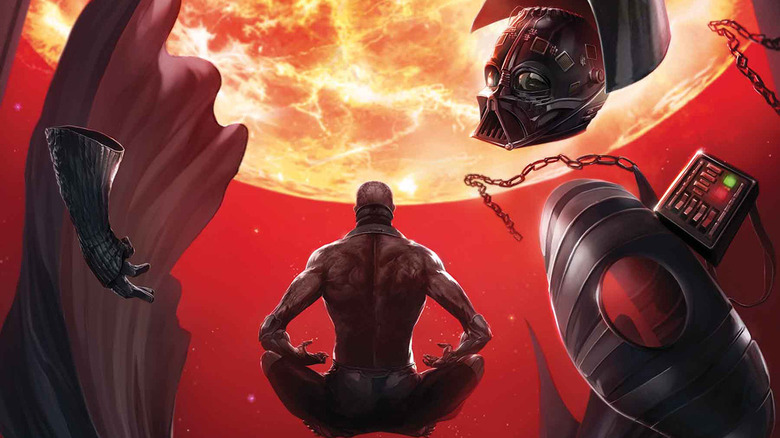
Writer Charles Soule and artist Giuseppe Camuncoli contributed a great deal to the mythos of Vader in the 2017 "Darth Vader" comic that ran for a total of 25 issues. But the moment in question as it pertains to the character's lack of Force lightning use came in the pages of "Darth Vader" #8, which was published in November 2017. The issue sees Vader and the Inquisitors hunting down Jocasta Nu, one of the last remaining Jedi in the aftermath of Order 66. The issue takes place very early on after Anakin Skywalker was left for dead on Mustafar by Obi-Wan Kenobi at the end of "Revenge of the Sith," still transitioning into his new life as Vader.
At one point, we get a page that occurs as Darth Vader is lost in thought, seemingly meditating and connecting to the Force in some way during a quiet moment. The above page shows us a version of Vader's likeness within the Force, with red, a color commonly associated with the Sith, running through his body, save for his arms and legs, which are white. Why is that? Well, Vader lost his extremities on Mustafar and they are now mechanical. And therein lies the answer.
Sith specifically channel Force lightning using their hands. Seemingly, because Vader's hands are no longer there, he can't channel the dark side of the Force through them, meaning that he can't use Force lightning. Beyond that, we see those blue butterflies, which seem to signal at least a bit of conflict with the light side of the Force. And the light side can "neutralize" Force lightning. With that, it seems this is one ability that the fearsome Darth Vader simply doesn't have in his tool belt. Back to choking people out for their incompetence.
Read this next: 13 Box Office Bombs That Are Truly Worth A Watch
The post There's A Reason Why Darth Vader Never Uses Force Lightning appeared first on /Film.
CP/M is now open-source for real

CP/M, the more capable of the two operating systems offered for the popular Amstrad CPC range of home computers, is now unequivocally open-source. Though it has been purportedly open source for some time, the license contained a peculiar specificity whereas the new wording is "equivalent to the well-known BSD or MIT licenses." — Read the rest
Uncovering a macOS App Sandbox escape vulnerability: A deep dive into CVE-2022-26706
Microsoft uncovered a vulnerability in macOS that could allow specially crafted codes to escape the App Sandbox and run unrestricted on the system. We shared these findings with Apple through Coordinated Vulnerability Disclosure (CVD) via Microsoft Security Vulnerability Research (MSVR) in October 2021. A fix for this vulnerability, now identified as CVE-2022-26706, was included in the security updates released by Apple on May 16, 2022. Microsoft shares the vulnerability disclosure credit with another researcher, Arsenii Kostromin (0x3c3e), who discovered a similar technique independently.
We encourage macOS users to install these security updates as soon as possible. We also want to thank the Apple product security team for their responsiveness in fixing this issue.
The App Sandbox is Apple’s access control technology that application developers must adopt to distribute their apps through the Mac App Store. Essentially, an app’s processes are enforced with customizable rules, such as the ability to read or write specific files. The App Sandbox also restricts the processes’ access to system resources and user data to minimize the impact or damage if the app becomes compromised. However, we found that specially crafted codes could bypass these rules. An attacker could take advantage of this sandbox escape vulnerability to gain elevated privileges on the affected device or execute malicious commands like installing additional payloads.
We found the vulnerability while researching potential ways to run and detect malicious macros in Microsoft Office on macOS. For backward compatibility, Microsoft Word can read or write files with an “~$” prefix. Our findings revealed that it was possible to escape the sandbox by leveraging macOS’s Launch Services to run an open –stdin command on a specially crafted Python file with the said prefix.
Our research shows that even the built-in, baseline security features in macOS could still be bypassed, potentially compromising system and user data. Therefore, collaboration between vulnerability researchers, software vendors, and the larger security community remains crucial to helping secure the overall user experience. This includes responsibly disclosing vulnerabilities to vendors.
In addition, insights from this case study not only enhance our protection technologies, such as Microsoft Defender for Endpoint, but they also help strengthen the security strategies of software vendors and the computing landscape at large. This blog post thus provides details of our research and overviews of similar sandbox escape vulnerabilities reported by other security researchers that helped enrich our analysis.
How macOS App Sandbox works
In a nutshell, macOS apps can specify sandbox rules for the operating system to enforce on themselves. The App Sandbox restricts system calls to an allowed subset, and the said system calls can be allowed or disallowed based on files, objects, and arguments. Simply put, the sandbox rules are a defense-in-depth mechanism that dictates the kind of operations an application can or can’t do, regardless of the type of user running it. Examples of such operations include:
- the kind of files an application can or can’t read or write;
- whether the application can access specific resources such as the camera or the microphone, and;
- whether the application is allowed to perform inbound or outbound network connections.

Therefore, the App Sandbox is a useful tool for all macOS developers in providing baseline security for their applications, especially for those that have large attack surfaces and run user-provided code. One example of these applications is Microsoft Office.
Sandboxing Microsoft Office in macOS
Attackers have targeted Microsoft Office in their attempts to gain a foothold on devices and networks. One of their techniques is abusing Office macros, which they use in social engineering attacks to trick users into downloading malware and other payloads.
On Windows systems, Microsoft Defender Application Guard for Office helps secure Microsoft Office against such macro abuse by isolating the host environment using Hyper-V. With this feature enabled, an attacker must first be equipped with a Hyper-V guest-to-host vulnerability to affect the host system—a very high bar compared to simply running a macro. Without a similar isolation technology and default setting on macOS, Office must rely on the operating system’s existing mitigation strategies. Currently, the most promising technology is the macOS App Sandbox.
Viewing the Microsoft sandbox rules is quite straightforward with the codesign utility. Figure 2 below shows the truncated sandbox rules for Microsoft Word:

One of the rules dictates the kind of files the application is allowed to read or write. As seen in the screenshot of the syntax below, Word is allowed to read or write files with filenames that start with the “~$” prefix. The reason for this rule is rooted in the way Office works internally and remains intact for backward compatibility.

Despite the security restrictions imposed by the App Sandbox’s rules on applications, it’s possible for attackers to bypass the said rules and let malicious codes “escape” the sandbox and execute arbitrary commands on an affected device. These codes could be hidden in a specially crafted Word macro, which, as mentioned earlier, is one of the attackers’ preferred entry points.
Previously reported Office-specific sandbox escape vulnerability
For example, in 2018, MDSec reported a vulnerability in Microsoft Office on macOS that could allow an attacker to bypass the App Sandbox. As explained in their blog post, MDSec’s proof-of-concept (POC) exploit took advantage of the fact that Word could drop files with arbitrary contents to arbitrary directories (even after passing traditional permission checks), as long as these files’ filenames began with a “~$” prefix. This bypass was relatively straightforward: have a specially crafted macro drop a .plist file in the user’s LaunchAgents directory.
The LaunchAgents directory is a well-known persistence mechanism in macOS. PLIST files that adhere to a specific structure describe (that is, contain the metadata of) macOS launch agents initiated by the launchd process when a user signs in. Since these launch agents will be the children of launchd, they won’t inherit the sandbox rules enforced onto Word, and therefore will be out of the Office sandbox.
Shortly after the above vulnerability was reported, Microsoft deployed a fix that denied file writes to the LaunchAgents directory and other folders with similar implications. The said disclosure also prompted us to look into different possible sandbox escapes in Microsoft Word and other applications.
Exploring Launch Services as means of escaping the sandbox
In 2020, several blog posts described a generic sandbox escape vulnerability in macOS’s /usr/bin/open utility, a command commonly used to launch files, folders, and applications just as if a user double-clicked them. While open is a handy command, it doesn’t create child processes on its own. Instead, it performs an inter-process communication (IPC) with the macOS Launch Services, whose logic is implemented in the context of the launchd process. Launch Services then performs the heavy lifting by resolving the handler and launching the right app. Since launchd creates the process, it’s not restricted by the caller’s sandbox, similar to how MDSec’s POC exploit worked in 2018.
However, using open for sandbox escape purposes isn’t trivial because the destination app must be registered within Launch Services. This means that, for example, one couldn’t run files like osascript outside the sandbox using open. Our internal offensive security team therefore decided to reassess the open utility for sandbox escape purposes and use it in a larger end-to-end attack simulation.
Our obvious first attempt in creating a POC exploit was to create a macro that launches a shell script with the Terminal app. Surprisingly, the POC didn’t work because files dropped from within the sandboxed Word app were automatically given the extended attribute com.apple.quarantine (the same one used by Safari to keep track of internet-downloaded files, as well as by Gatekeeper to block malicious files from executing), and Terminal simply refused to run files with that attribute. We also tried using Python scripts, but the Python app had similar issues running files having the said attribute.
Our second attempt was to use application extensibility features. For example, Terminal would run the default macOS shell (zsh), which would then run arbitrary commands from files like ~/.zshenv before running its own command line. This meant that dropping a .zshenv file in the user’s home directory and launching the Terminal app would cause the sandbox escape. However, due to Word’s sandbox rules, dropping a .zshenv file wasn’t straightforward, as the rules only allowed an application to write to files that begin with the “~$” prefix.
However, there is an interesting way of writing such a file indirectly. macOS was shipped with an application called Archive Utility responsible of extracting archive files (such as ZIP files). Such archives were extracted without any user interaction, and the files inside an archive were extracted in the same directory as the archive itself. Therefore, our second POC worked as follows:
- Prepare the payload by creating a .zshenv file with arbitrary commands and placing it in a ZIPfile. Encode the ZIPfile contents in a Word macro and drop those contents into a file “~$exploit.zip” in the user’s home directory.
- Launch Archive Utility with the open command on the “~$exploit.zip” file. Archive Utility ran outside the sandbox (since it’s the child process of /usr/bin/open) and was therefore permitted to create files with arbitrary names. By default, Archive Utility extracted the files next to the archive itself—in our case, the user’s home directory. Therefore, this step successfully created a .zshenv file with arbitrary contents in the user’s home directory.
- Launch the Terminal app with the open command. Since Terminal hosted zsh and zsh ran commands from the .zshenv file, the said file could escape the Word sandbox successfully.

Perception Point’s CVE-2021-30864
In October 2021, Perception Point published a blog post that discussed a similar finding (and more elegant, in our opinion). In the said post, Perception Point released details about their sandbox escape (now identified as CVE-2021-30864), which used the following facts:
- Every sandboxed process had its own container directory that’s used as a “scratch space.” The sandboxed process could write arbitrary files, including arbitrary filenames, to that directory unrestricted.
- The open command had an interesting –env option that could set or override arbitrary environment variables for the launched app.
Therefore, Perception Point’s POC exploit was cleverly simple:
- Drop a .zshenv file in the container directory. This was allowed because sandbox rules weren’t enforced on that directory.
- Launch Terminal with the open command but use the –env option to override the HOME environment variable to point to the container directory. This made zsh consider the user’s home directory to be the container directory, and run commands from the planted .zshenv file.
Apple has since patched the vulnerability Perception Point reported in the latest version of macOS, Monterey. While we could still create the “~$exploit.zip” file in the user’s home directory, using open to launch the Archive Utility on the ZIP file now resulted in it being extracted to the Downloads folder. While this is an interesting behavior, we could no longer use it for sandbox escape purposes.
Final exploit attempt: Revisiting the ‘open’ command
After discovering that Apple has fixed both variants that abuse .zshenv, , we decided to examine all the command line options of the open command. Soon after, we came across the following:

As mentioned earlier, we couldn’t run Python with a dropped .py file since Python refuses to run files with the “com.apple.quarantine” extended attribute. We also considered abusing the PYTHONSTARTUP environment variable, but Apple’s fix to CVE-2021-30864 apparently prevented that option, too. However, –stdin bypassed the “com.apple.quarantine” extended attribute restriction, as there was no way for Python to know that the contents from its standard input originated from a quarantined file.
Our POC exploit thus became simply as follows:
- Drop a “~$exploit.py” file with arbitrary Python commands.
- Run open –stdin=’~$exploit.py’ -a Python, which runs the Python app with our dropped file serving as its standard input. Python happily runs our code, and since it’s a child process of launchd, it isn’t bound to Word’s sandbox rules.

We also came up with a version that’s short enough to be a Twitter post:

Detecting App Sandbox escapes with Microsoft Defender for Endpoint
Since our initial discovery of leveraging Launch Services in macOS for generic sandbox escapes, we have been using our POC exploits in Red Team operations to emulate end-to-end attacks against Microsoft Defender for Endpoint, improve its capabilities, and challenge our detections. Shortly after our Red Team used our first POC exploit, our Blue Team members used it to train artificial intelligence (AI) models to detect our exploit not only in Microsoft Office but also on any app used for a similar Launch Services-based sandbox escape.
After we learned of Perception Point’s technique and created our own new exploit technique (the Python POC), our Red Team saw another opportunity to fully test our own detection durability. Indeed, the same set of detection rules that handled our first sandbox escape vulnerability still turned out to be durable—even before the vulnerability related to our second POC exploit was patched.

For Defender for Endpoint customers, such detection durability feeds into the product’s threat and vulnerability management capabilities, which allows them to quickly discover, prioritize, and remediate misconfigurations and vulnerabilities—including those affecting non-Windows devices—through a unified security console.
Jonathan Bar Or
Microsoft 365 Defender Research Team
The post Uncovering a macOS App Sandbox escape vulnerability: A deep dive into CVE-2022-26706 appeared first on Microsoft Security Blog.
Resident Evil Season 1: Release Date, Time and Episode Count
Here’s a piece of good news for all the Resident Evil fans. Yes, we are talking about the release of the upcoming American TV series based on the legendary video game series. Netflix is coming up with the anticipated horror sci-fi TV series soon, and here’s everything you need to know about its release schedule.
The production of the TV series began in 2019, but it wasn’t formally announced until 2020. Also, we had to wait for Netflix Geeked Week 2022 to get the show’s first trailer.
Resident Evil | Official Teaser 2
Resident Evil TV Series Release Date, Time and Total Episodes
The horror TV series will officially come out on Netflix on Thursday, July 14, 2022, at 12:00 AM PST. The first season will have eight episodes that will land on the streaming platform altogether. That means fans won’t have to wait for a new episode every week.
As usual, the show’s release time on Netflix will vary depending on your region. Anyway, to avoid any perplexity, you can follow the below schedule that will help you to track the show’s release in different regions.
- Central Timing: 2:00 AM (July 14th)
- Eastern Timing: 3:00 AM (July 14th)
- British Timing: 8:00 AM (July 14th)
- Indian Timing: 12:30 PM (July 14th)
- Australian Timing: 5:00 PM (July 14th)
Netflix's #ResidentEvil series is a winner, whether you're new to the franchise or a diehard counting every Easter Egg. Love love love Lance Reddick as Wesker. As a RESIDENT EVIL fan, I'm digging the adaptation's focus on Umbrella, viral mysteries, and yes, zombie action. pic.twitter.com/VKyaPaCykq
— Matt Donato (@DoNatoBomb) July 12, 2022
The plot of the TV series explored
The upcoming American TV series doesn’t have any connection with the film series of the franchise. However, video games of the franchise serve as the backstory of the series.
The TV series has two storylines set in different timelines- 2022 and 2036. The former timeline follows Jade and Billie, the daughters of Albert Wesker, unleashing the dark secrets of Umbrella Corporation. In contrast, 2036 sees the grown-up daughters of Albert getting stuck in the world where streets are filled with Zombies.
Furthermore, the TV series will be set in the world that was destroyed in the video games back in 1998. Even though the show has several similarities with video games, it will feature a storyline that we haven’t seen in any video game or previous live-action adaptation.
The post Resident Evil Season 1: Release Date, Time and Episode Count appeared first on ForeverGeek.
Return to Monkey Island art backlash “surprised” Guybrush actor
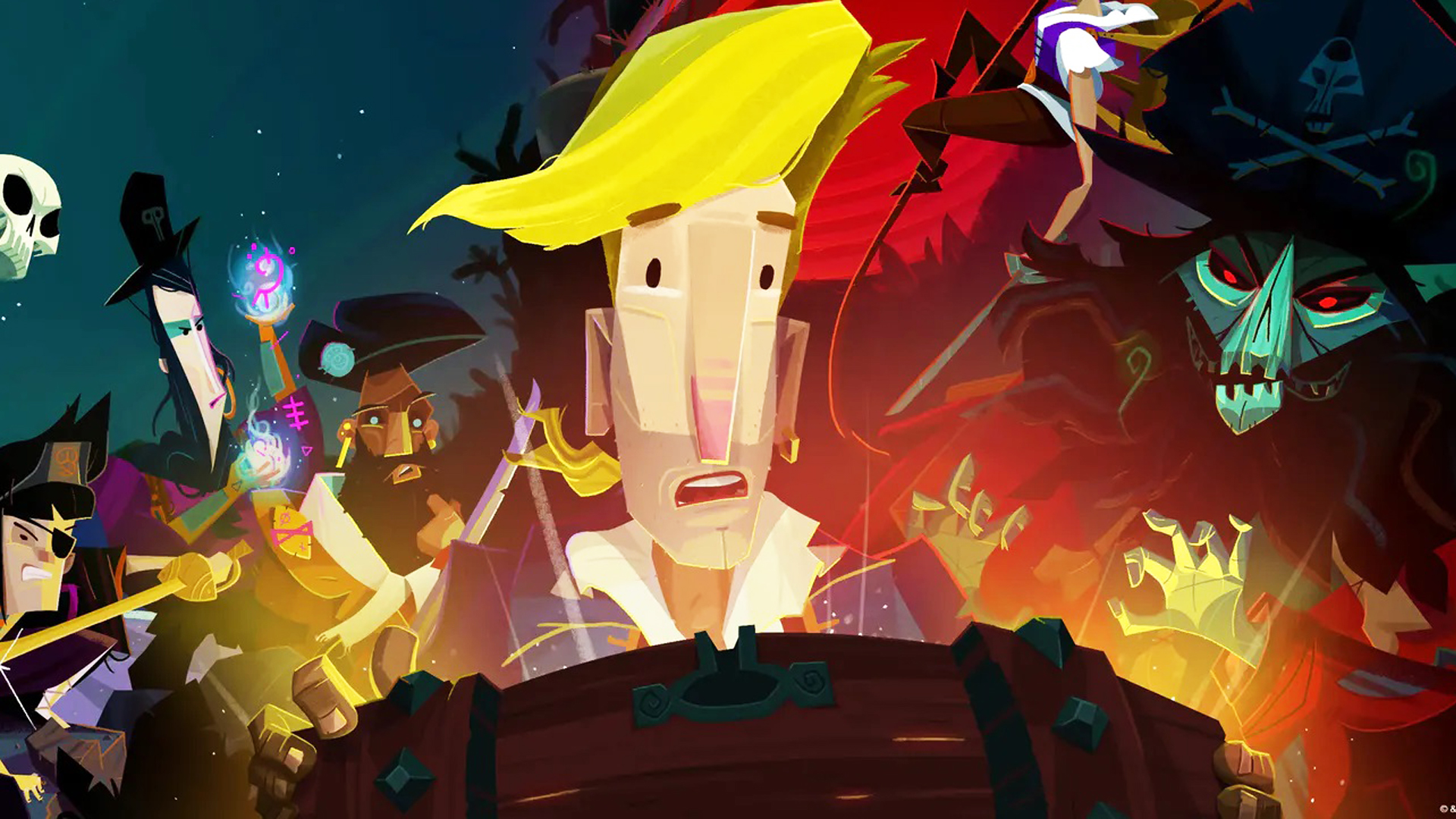
The long-awaited sixth game in arguably the best adventure game series of all time is out soon, but the Return to Monkey Island art backlash from a community angry it's not a retro-style game has upset a few people - including the voice actor behind protagonist Guybrush Threepwood, who was "really surprised" by the controversy.
While the initial Return to Monkey Island reveal just after April Fool's Day was met with enthusiasm from fans, some were unsure about the more angular and storybook-like art style, from the art director of Knights & Bikes. This turned into an extremely vocal reaction once the gameplay trailer hit - including some very nasty comments that drove creator Ron Gilbert to stop talking about the game.
In a new interview with YouTuber Cressup, Guybrush Threepwood actor Dominic Armato opens up about the reaction to the art style. "I was really surprised that there were folks who were not happy with it," he explains. "It just never even occurred to me that would be the case. It's very unique, distinctive, and stylized, and I love it, personally."
Microsoft Releases Open Source Toolkit for Generating SBOMs
Software giant Microsoft has open-sourced its internal tool for generating SBOMs (software bill of materials) as part of a move to help organizations be more transparent about supply chain relationships between components used when building a software product.
Ms. Marvel Season 1 Ending Explained: The Beginning Of A New Era
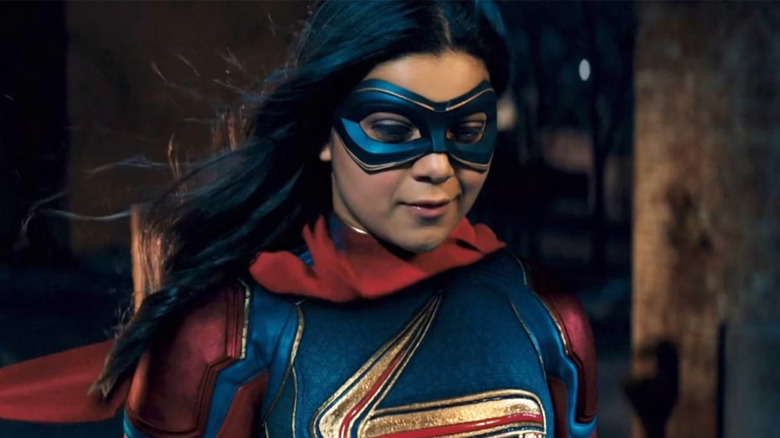
Warning: Major spoilers ahead for season 1 of "Ms. Marvel."
Bringing the story of Kamala Khan to life in all its vibrant, compelling glory in a TV series format comes with its own set of challenges, especially amid the more diverse projects already populating Phase 4 of the Marvel Cinematic Universe. This task entails establishing Kamala as a distinct character that is true to her cultural and comic roots while weaving a compelling story that connects seamlessly to the rest of the MCU. "Ms. Marvel" series creator Bisha K. Ali succeeds in doing just that and more, creating a charming, eventful entry that raises the bar for representation in groundbreaking ways.
As a South Asian writer, "Ms. Marvel" means a great deal to me — be it the nuanced, expertly-woven Partition story that rarely sees the light of day in mainstream media or the accurate, relatable representation of Kamala's intersectional identities that is so important for many reasons. Season 1 of the show ended on a mostly positive note (it is a YA-centered story, after all) while putting forth an epilogue and a mid-credits scene that deepen and widen the ambit of possibilities for the future of the MCU.
Apart from bringing a satisfying conclusion to this chapter of Kamala's story, "Ms. Marvel" ends on a note that brings home some of the show's running themes, which include the importance of self-acceptance, the support of community, strength in solidarity, and most importantly, what superhero-ing means for a teenager from New Jersey. So let's break down the key parts of the first season finale of "Ms. Marvel."
Kamala Embraces Her Authentic Self
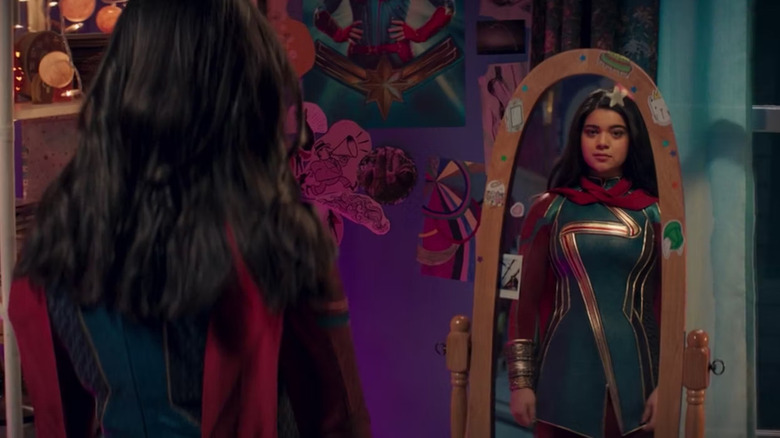
Kamala (Iman Vellani) has always been true to her passions: she's an avid Marvel fan (just like Vellani in real-life), a talented sketch artist, and an extremely warm individual. However, the tussle arises when Kamala is presented with the very real possibility of having superpowers, and assuming the responsibilities (and risks) that come with it, all while navigating the concerns of her family, especially her mother Muneeba (Zenobia Shroff).
Episode 6 of "Ms. Marvel" establishes a wholesome arc for both of Kamala's parents — while Muneeba accepts her for who she is and puts her faith in her (even stitching her Ms. Marvel costume for her), her father inadvertently provides her with the superhero moniker while explaining how "Kamala" translates to "marvel" in Urdu. Although concerned for her safety, both of them cheer her on during the big, scary fight with the Department of Damage Control, later reiterating how proud they are of her for standing up for what's right.
Kamala underwent a lot of personal turmoil and confusion while learning the nature of Aisha's (Mehwish Hayat) powers and the true nature of her identity. However, as iterated by Waleed (Farhan Akhtar), the terms "Djinn" or "Clandestine" are merely labels and do not truly sum up who Kalama is, as she is infinitely more. This is what Kamala reaffirms when Bruno (Matt Lintz) tells her about the "mutation" in her genes — while the reveal is huge for the MCU, and for Kamala, it is just another aspect of her contrapuntal identity.
Fighting For What's Right (With The Ones You Love)
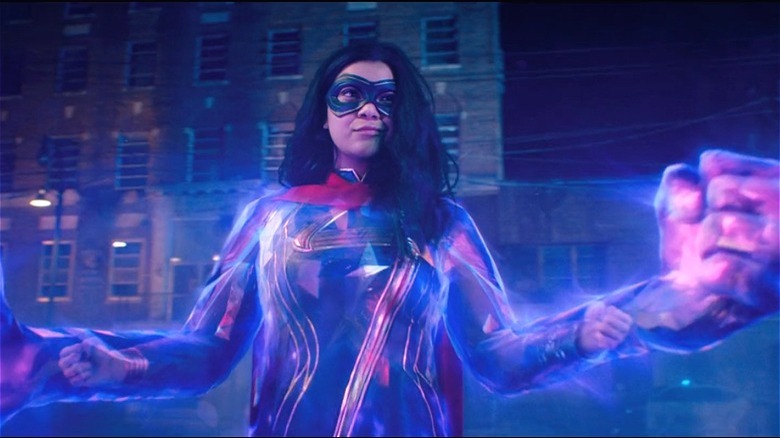
When Kamala's father expresses concern for her safety, she says that he didn't raise her to just stand by when people need help. This is at the core of who Kamala Khan is, and she proves that by doing everything in her power to protect Kamran (Rish Shah) and the others during the high-school showdown. Aamir (Saagar Sheikh) steps up too, aiding the teens in their plan, in which they chart out an elaborate setup to stall the special forces on Kamran's heels.
What might have been a turning point in Kamran's story and led to a potential villain arc is thwarted when Kamala tells him the truth about Najma's death, that she sacrificed herself when she closed the Veil of Noor and gave Kamran the last of her powers. Even when Kamran spirals out of control and is very close to potentially hurting the civilians, Kamala bravely intervenes to protect him, giving Kamran the support he needs and allowing him to escape in the process, with the help of Kareem's (Aramis Knight) contact at the harbor.
The power of friendship plays a part here, and while this trope is technically overused and hackneyed by this point, the show utilizes it in a convincing, refreshing way. Kamala takes accountability whenever she messes up, as evidenced in her apology to Nakia (Yasmeen Fletcher) for hiding the truth from her. There's also an endearing sense of solidarity among the community, who come together to rally behind the kids and later hype up Kamala via social media (as they should). This gives Kamala the confidence and affirmation to keep doing what she does best, ushering in a new chapter in her life.
Paving The Path For The MCU's Future
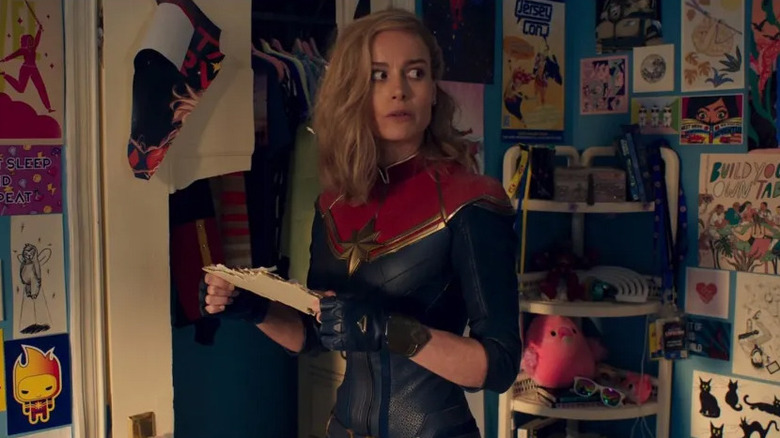
There were two major reveals in the episode finale — one being that Kamala is, in fact, a mutant, which marks the group's official introduction into the MCU, which has huge implications for the MCU. But there was also a post-credits scene that sees Carol Danvers (Brie Larson) suddenly swap places with Kamala. Danvers' introduction in the show sets up the upcoming "The Marvels," which will see Kamala team up with her idol, alongside Monica Rambeau (Teyonah Parris of "WandaVision"). Both reveals hold a lot of weight in terms of the direction of the MCU, potentially tying to the lores that will be explored hereon, leading to the introduction of characters who will be instrumental for what happens next.
Furthermore, while it is unclear whether "Ms. Marvel" will get a second season, the show might very well return and continue the storylines of these characters. We want to know how Kamran is holding up in Karachi with Kareem, whether Bruno reunites with Kamala and Nakia (what's in that letter he slid into Kamala's locker?), and what's next for Nakia as an empowered individual who intends to usher in a much-needed reform. Although "Ms. Marvel" is thoroughly underappreciated when compared to other MCU shows, such as "Loki" or "Wandavision," I'm hoping that more people will get on board with Kamala's story and derive genuine joy and meaning from it.
Kamala's story is obviously not over, and it will be interesting to delve into her mutant origins, which might set up the X-Men in future MCU projects, paving a whole new direction for the MCU. "Ms. Marvel" remains a vibrant entry into the MCU, spearheading characters worth rooting for within a structure that champions thoughtful, meaningful representation that will hopefully be further embraced in the near future.
Read this next: The 15 Most Anticipated Comic Book Movies And Shows Of 2022, Ranked
The post Ms. Marvel Season 1 Ending Explained: The Beginning of a New Era appeared first on /Film.
Amazon Admits Giving Ring Camera Footage To Police Without a Warrant or Consent
Read more of this story at Slashdot.
The Time I Tried Polyphasic Sleep and Started Hallucinating - CNET
Energy Bills To Rise More Than Predicted, Says UK Energy Regulator Ofgem Boss
Read more of this story at Slashdot.























